Mapping Coventry: The drawings of Dr Troughton
09 March 2022
We want to celebrate the recent completion of an Archives digitisation project, of the topographical drawings of Dr Nathaniel Troughton (1794-1868), one that we believe will expand access to a unique, historically significant, and physically fragile collection of drawings of Coventry. It has been an endeavour taking many months of preparation, organisation, diligence, and time spent in our in-house studio. The collection is housed in its original A1 sized portfolios, with the A4 drawings sitting inside individual paper enclosures.
Dr Nathaniel Troughton was a local surgeon and trustee of various charities and schools, namely the Church Charities, Joseph Chambers’ Charity, Palmer’s Charity, Henry VIII Grammar School, and Blue Coat School, and demonstrably, a very competent draughtsman. He produced 11 portfolios of beautiful pencil drawings, some of which are in colour, of 19th century Coventry streets, buildings, and interiors. The drawings were presented to us back in April 1876 by Troughton's widow, Mrs. T. B. Troughton, subsequently listed & catalogued, and 146 years later are fully digitised!
Other than their obvious beauty, the drawings are excellent visual documentary evidence of architectural continuity and change in Coventry. Many of the medieval houses can be recognised in Troughton's drawings. According to Victoria County History, buildings in the streets of the central shopping area of the city were destroyed during a rebuilding programme that took place between the late 19th and early 20th century. The clearances of 1930-7 saw the disappearance of buildings in the Great Butchery, the Little Butchery, St. Agnes Lane, and parts of Well Street, and Cook Street whilst Second World War air-raids obliterated many of the survivors. A survey of 1958 revealed an exceptional number of timber-framed houses of medieval origin, particularly in what had been the outlying areas of the old city.
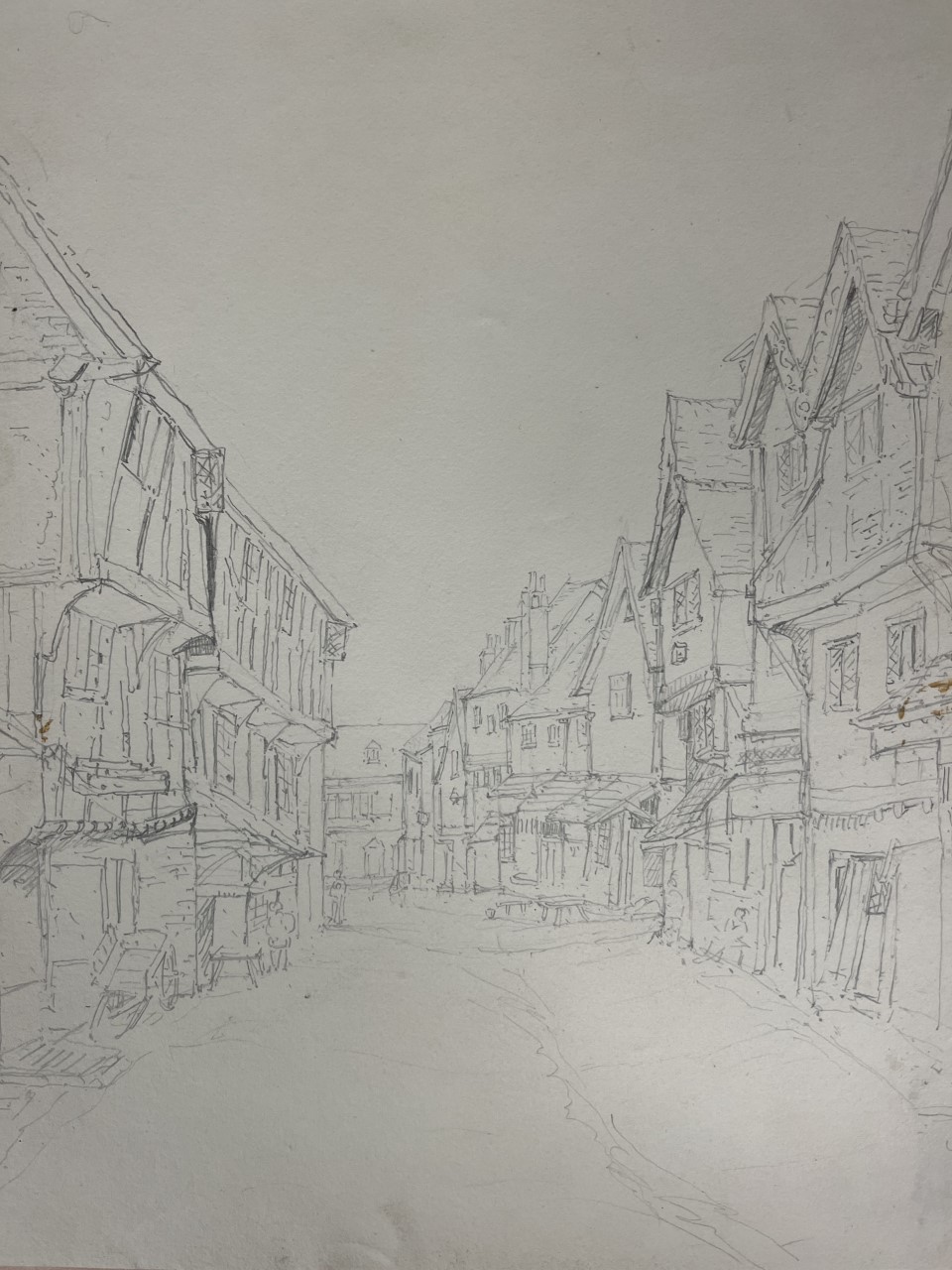
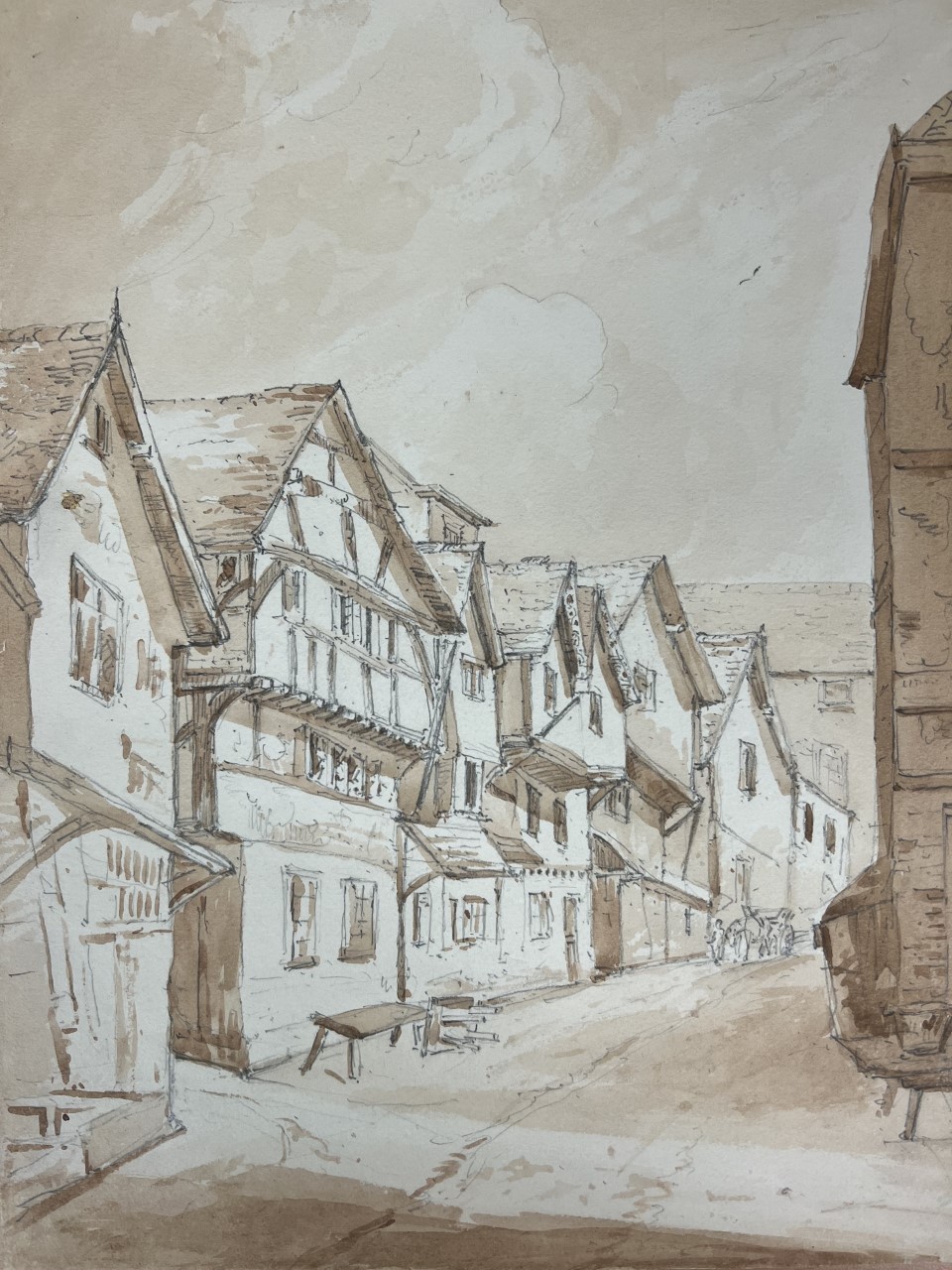
Great Butchery looking north Great Butchery looking South
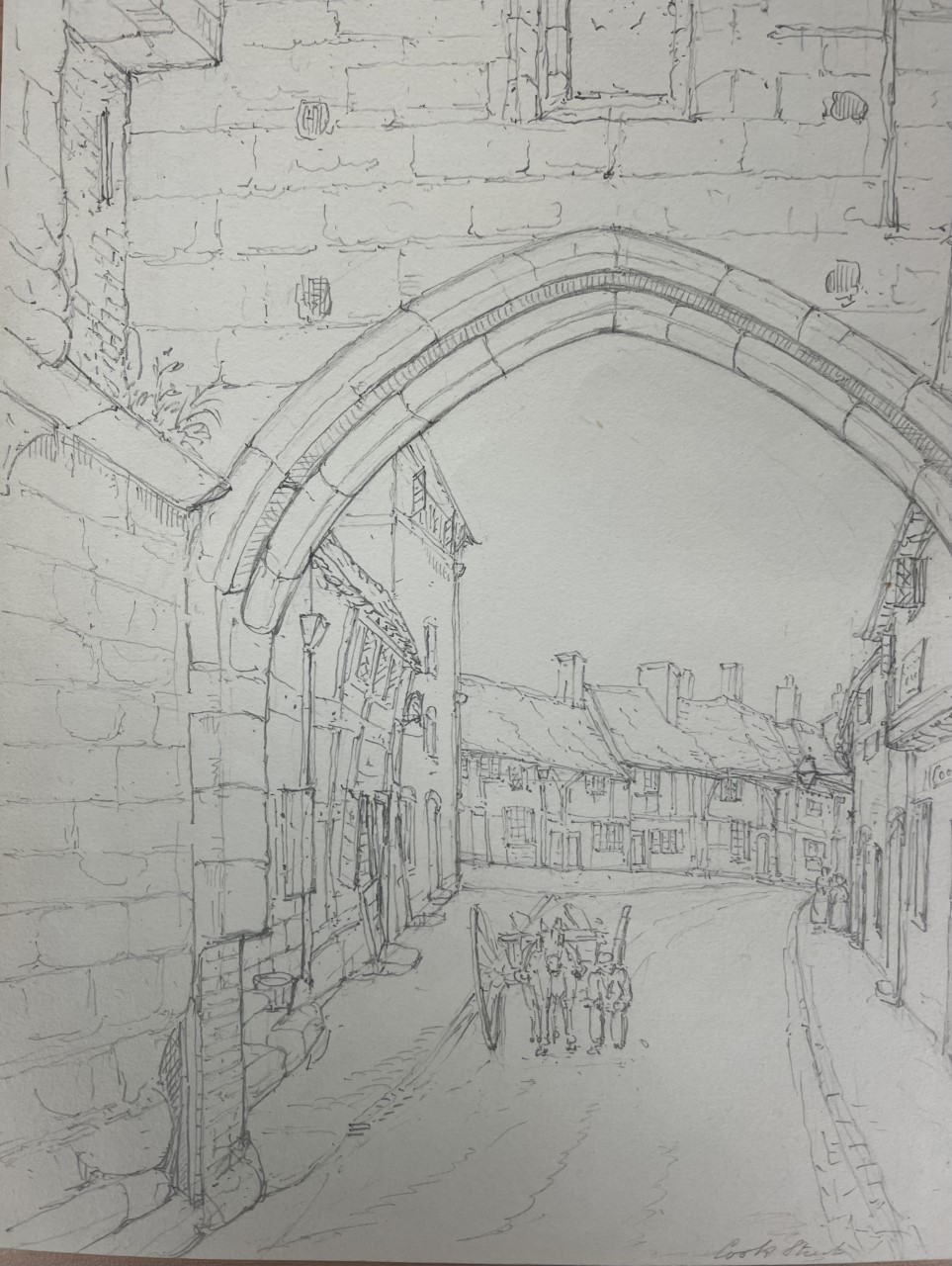
.jpg)
Cook Street Cook Street No 42
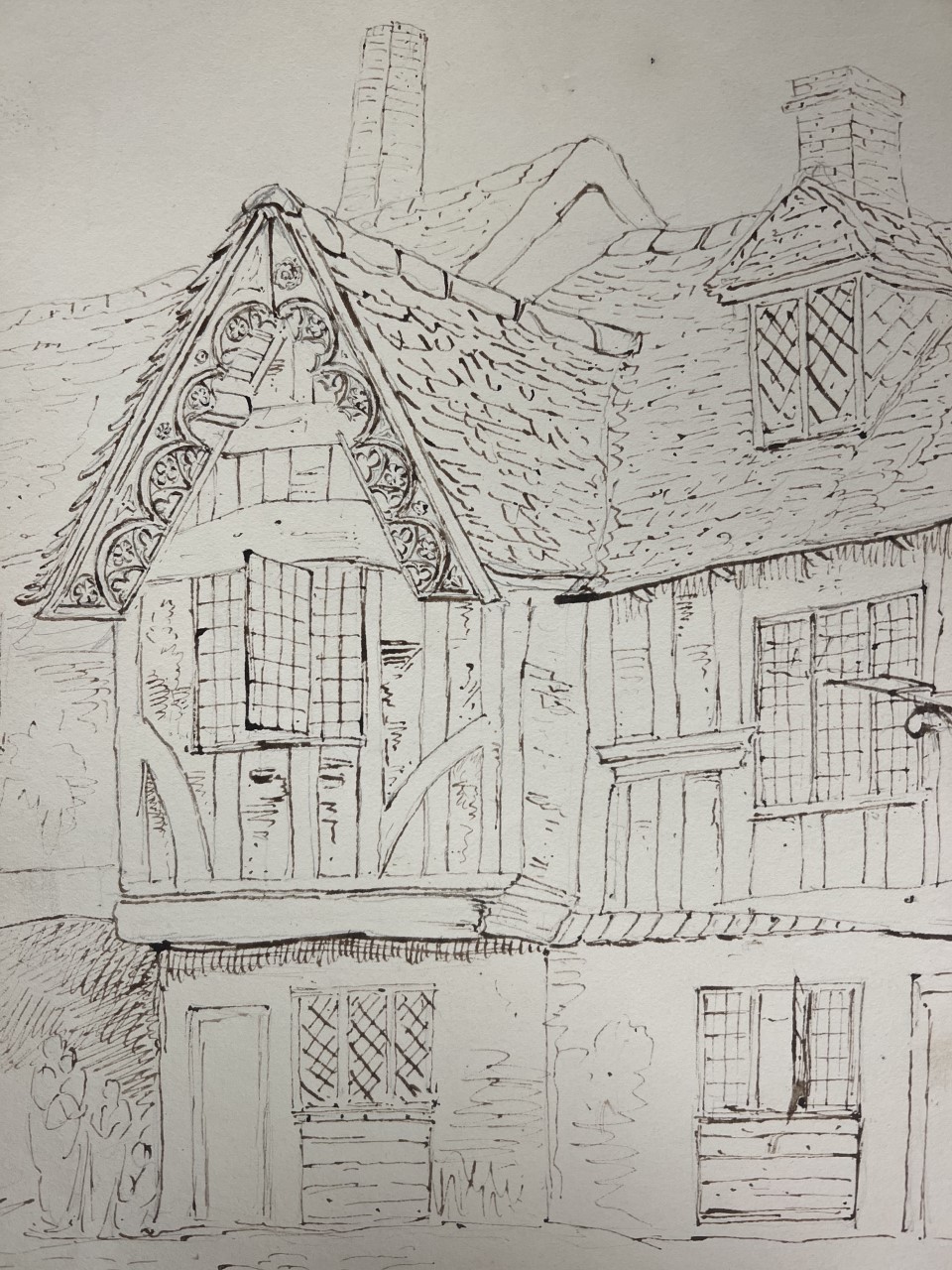
Well Street
In Troughton’s lifetime Pepper Lane, Hay Lane, Bayley Lane, and Priory Row still contained many medieval and timber-framed houses. A large block of houses stood on the south-west corner of St. Michael’s churchyard until 1783-4, when they were demolished. The only remaining medieval timber framed building in the Cathedral Quarter is 22 Bayley Lane (also known as The Cottage), a two storied, grade II* listed, early 16th century house with carved buttresses to the vertical timbers, carved barge-boards, and traceried panels to an angle bracket and its supporting post. It is thought to have been constructed as the rebuilding of a house which previously stood there, thought to be called the Castle Bakehouse.1
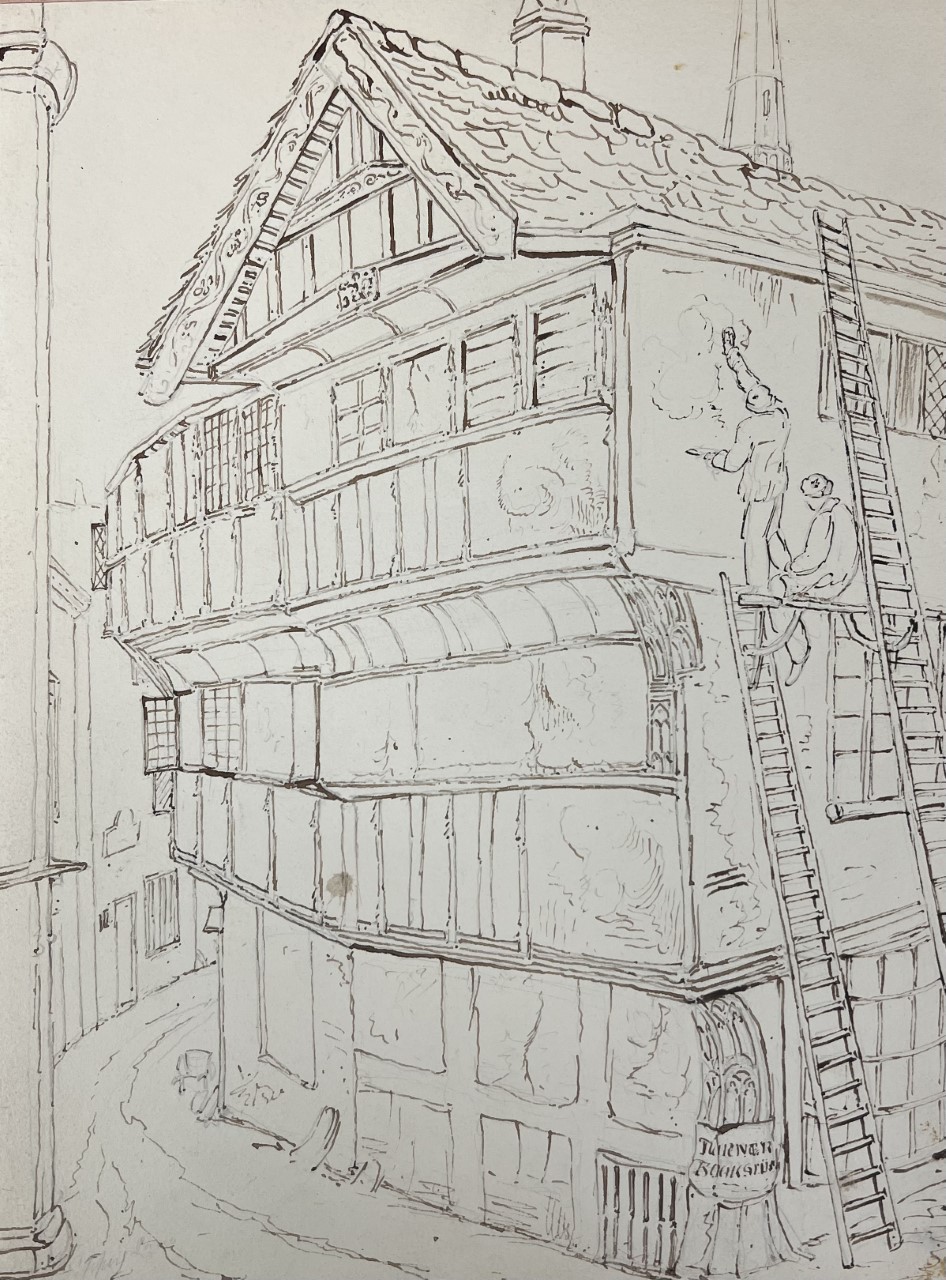
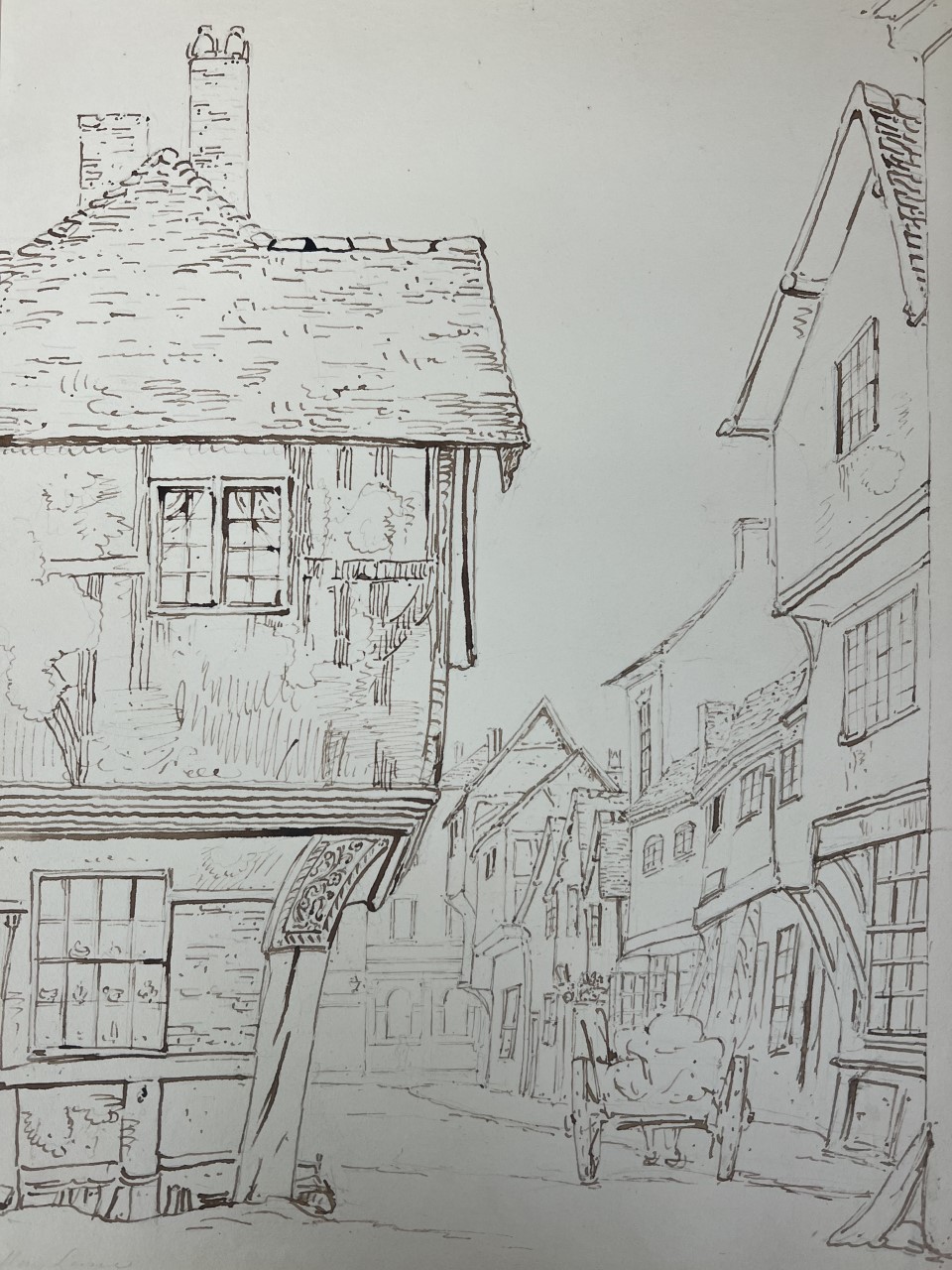
Pepper Lane Hay Lane
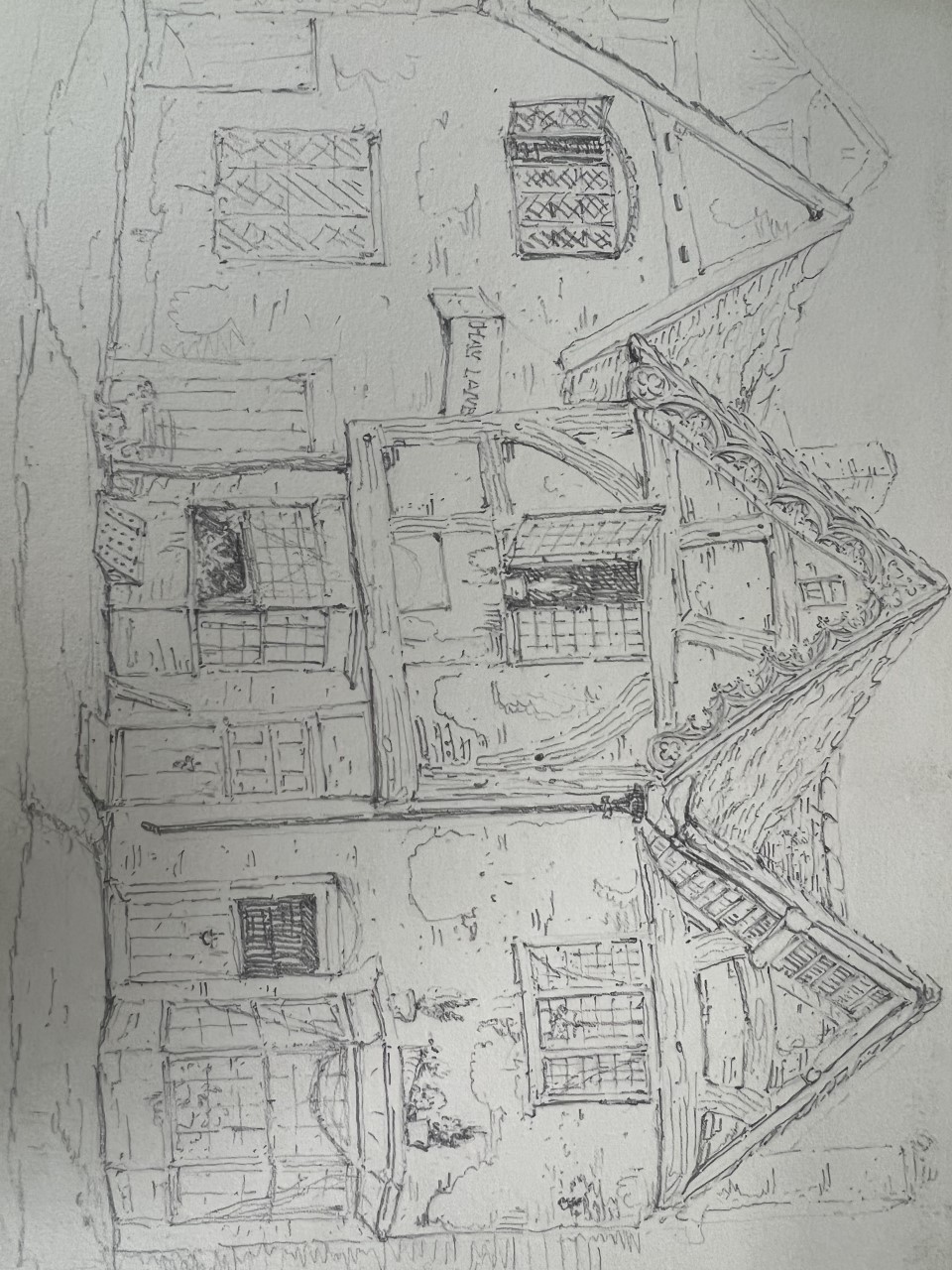
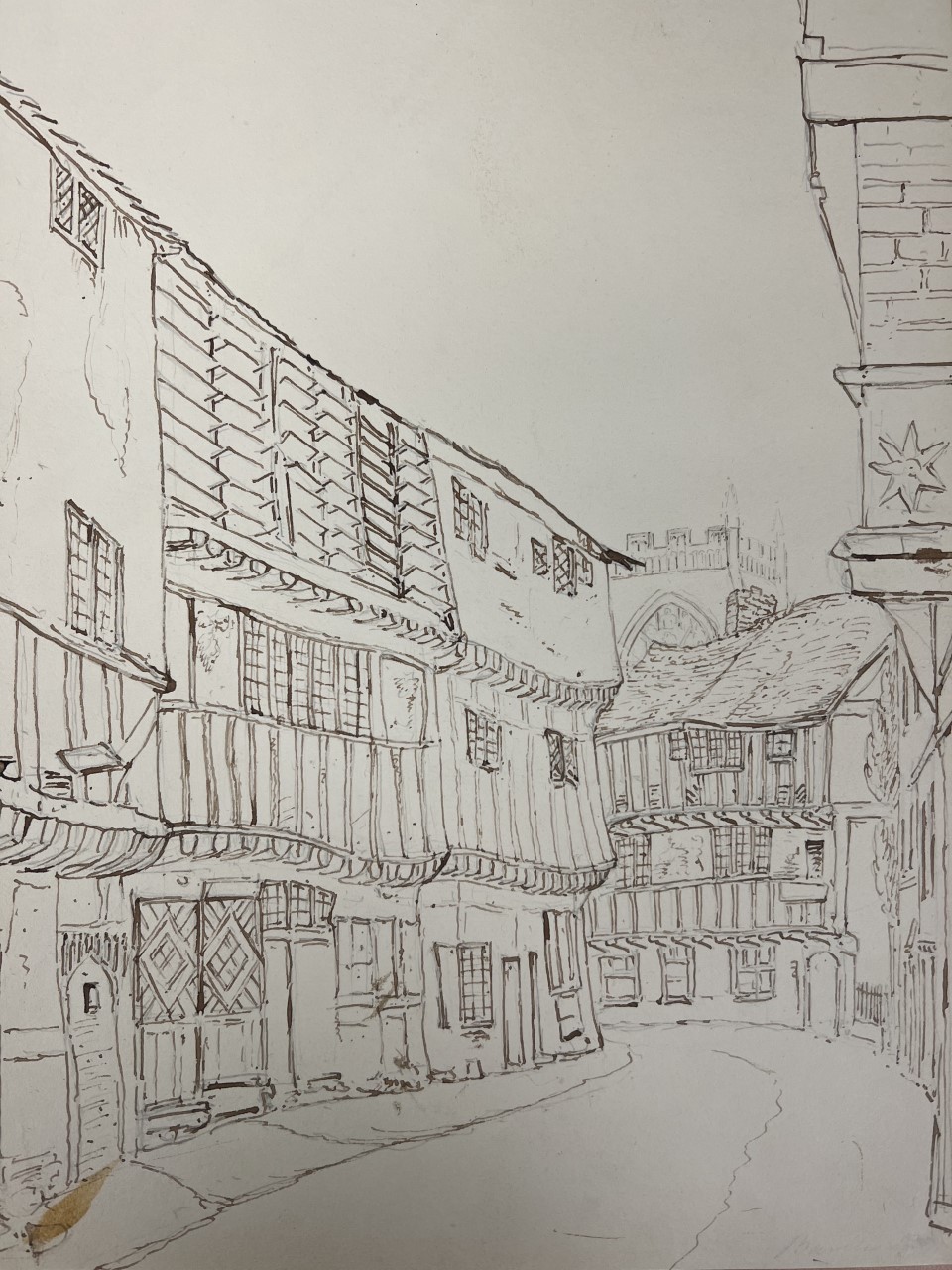
Hay Lane west side Bayley Lane
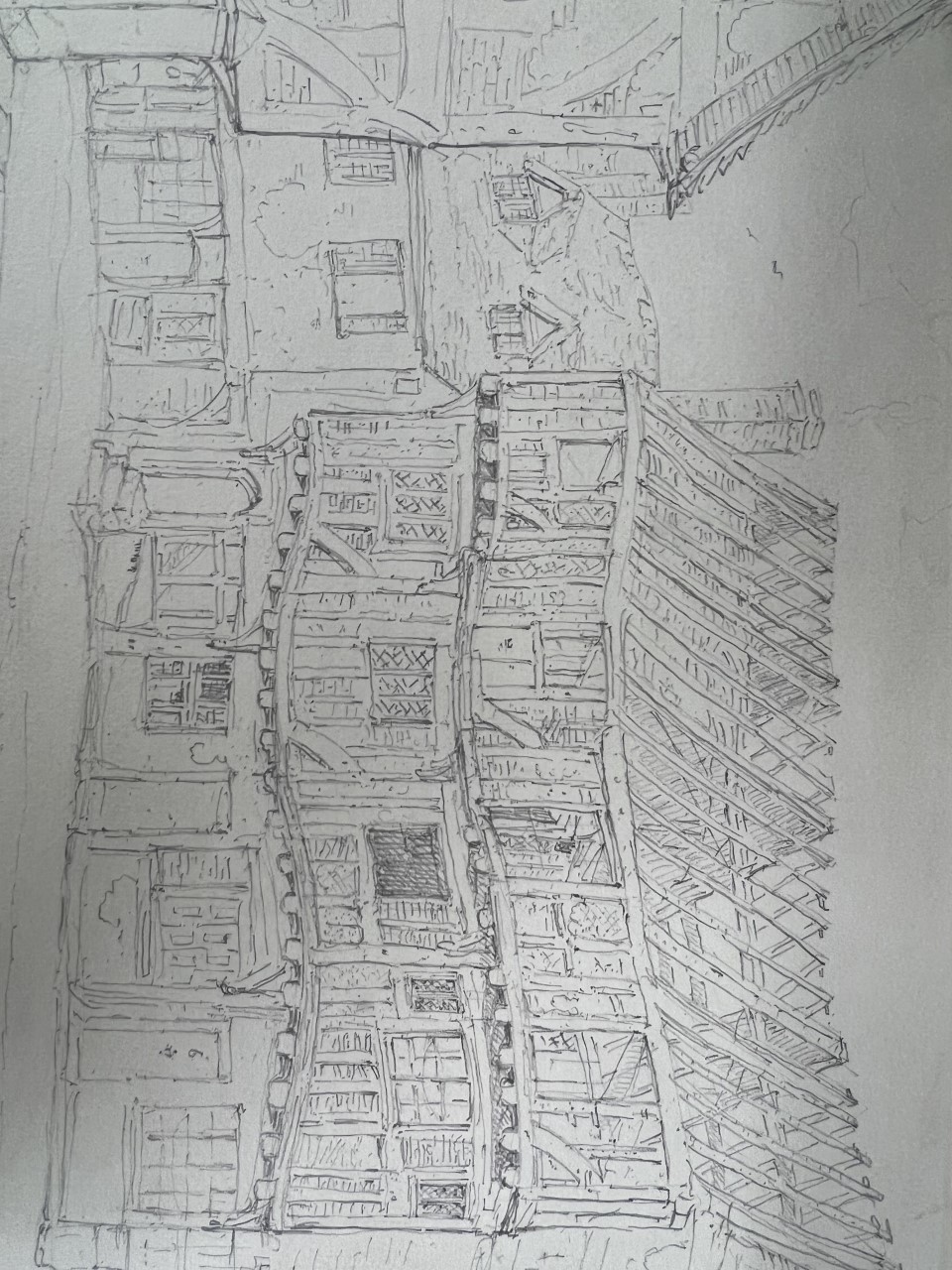
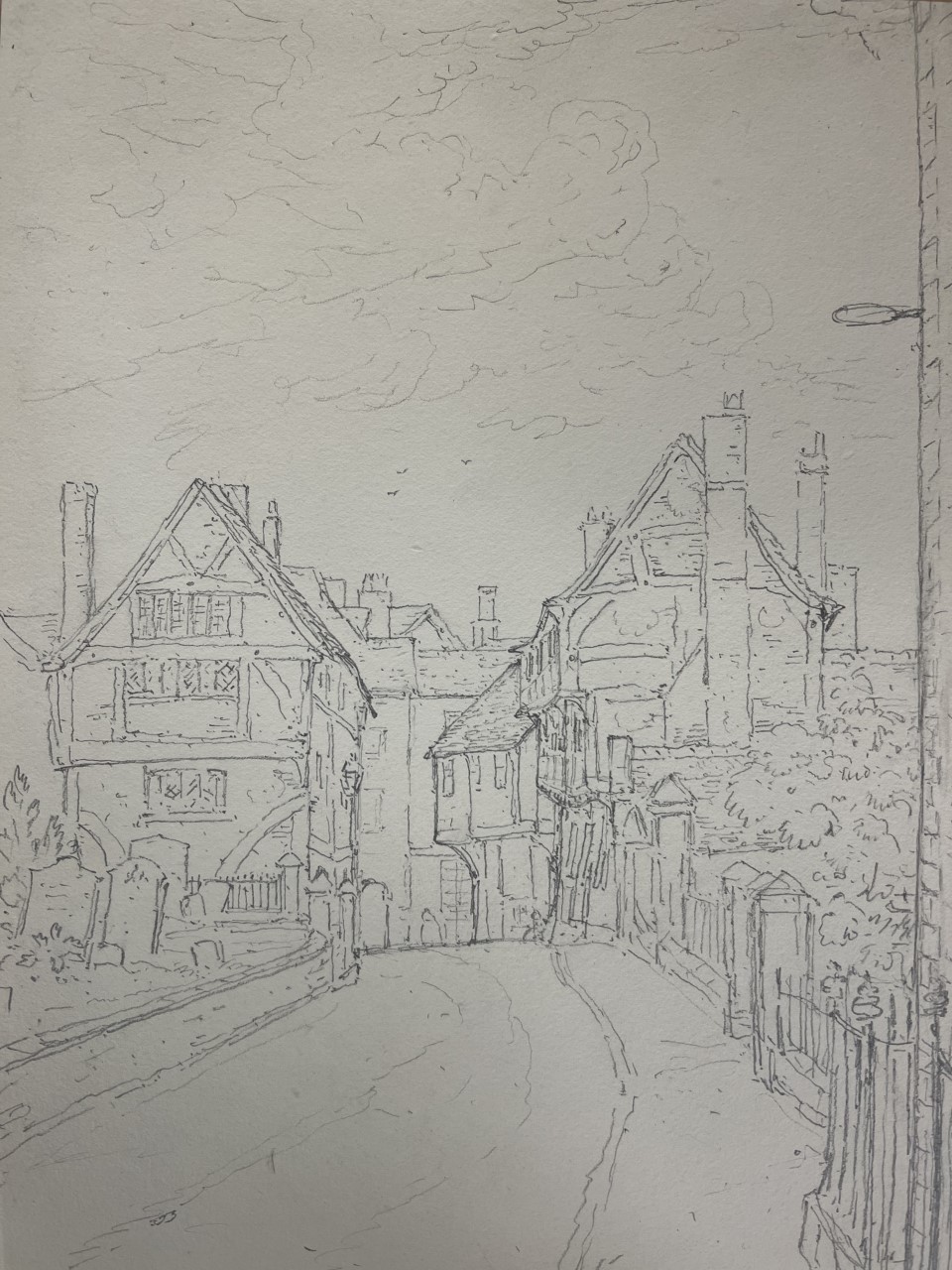
Priory Row
The only other examples of decorative work of this period can be found at Bond’s and Ford’s Hospitals. They are currently used as Sheltered Housing run by the Coventry Church Municipal Charities. The original Bond’s Hospital was founded in 1506 by Thomas Bond, a draper who became Mayor of Coventry in 1497, and he left money for the sustenance of the poor. Whilst the majority of the street frontage was rebuilt in 1832, the west end bay rebuilt in 1834, and the back wing extended in 1847, the hospital still retains all of its original features. In 1970 four flats were added and 31 two bedroomed flats in 2004.
Ford’s Hospital, traditionally referred to as Grey Friars Hospital, due to it being located on GreyFriars Lane, was founded in 1509, by William Ford to provide accommodation for six elderly people. Inside the building is a narrow courtyard (11.9m x 3.7m) and is considered by historians to be a particularly fine example of English domestic architecture of the period.2 The Hospital was hit during the Coventry Blitz but it was restored with original timbers between 1951 and 1953.
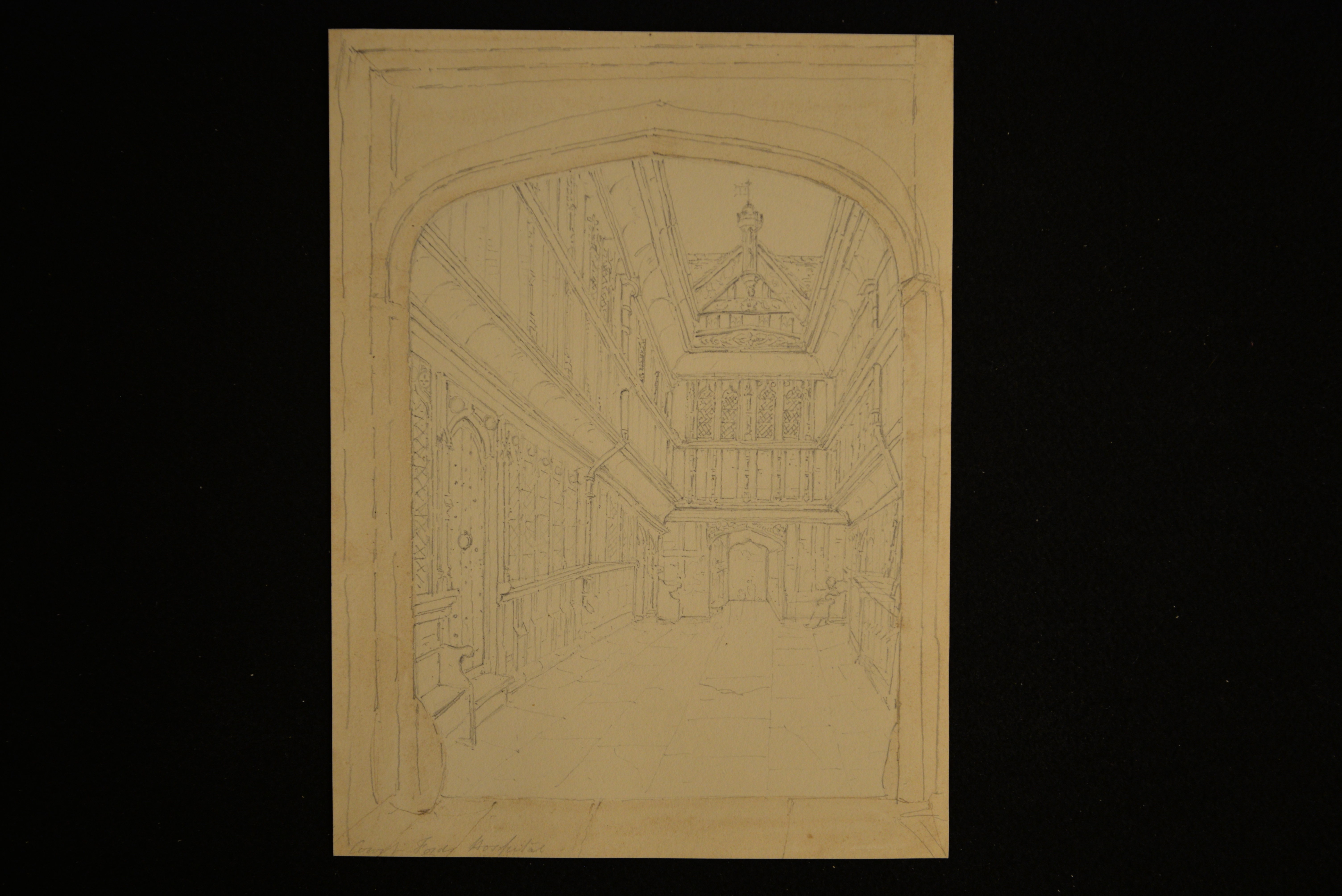
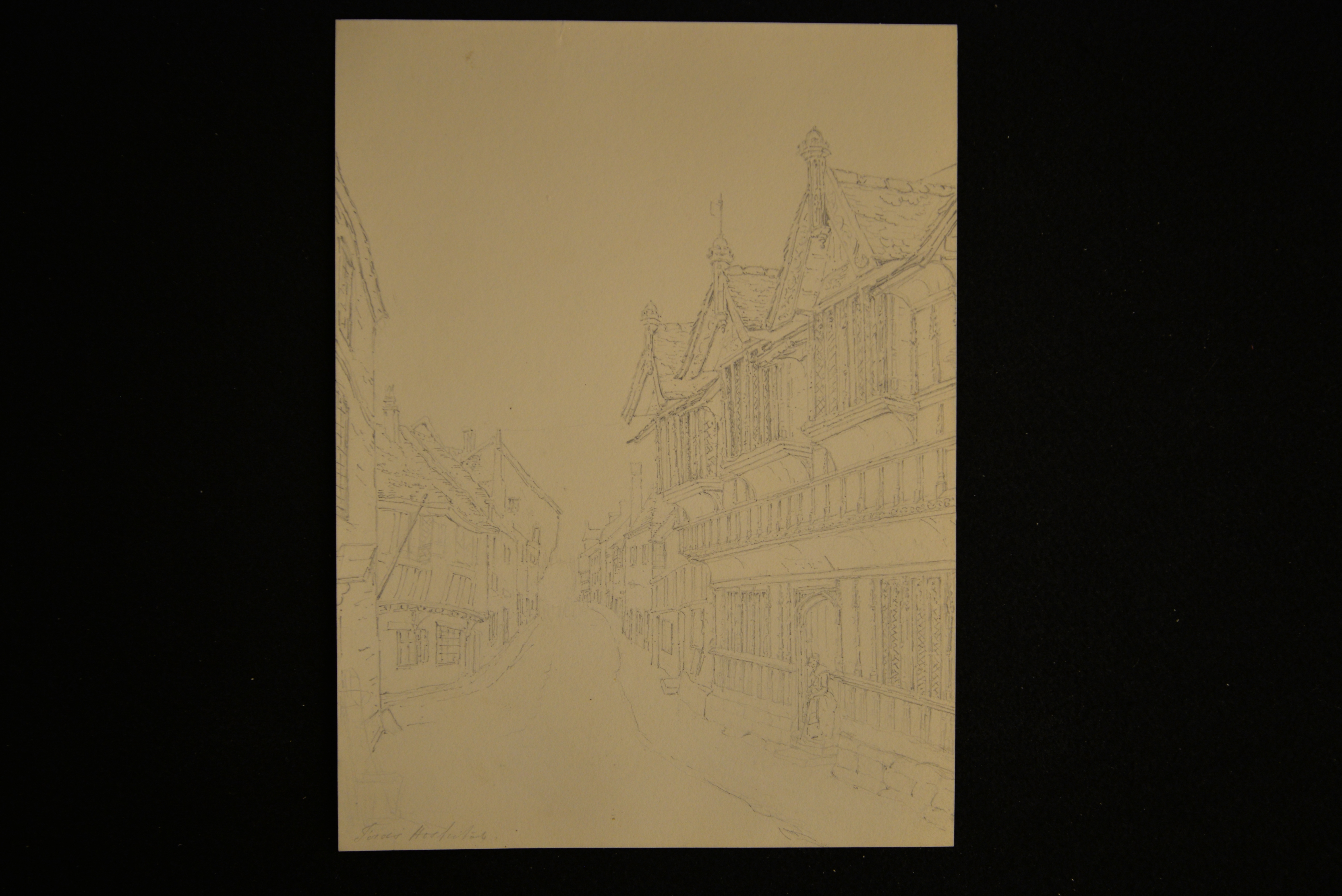
Court at Ford’s Hospital Ford’s Hospital street view
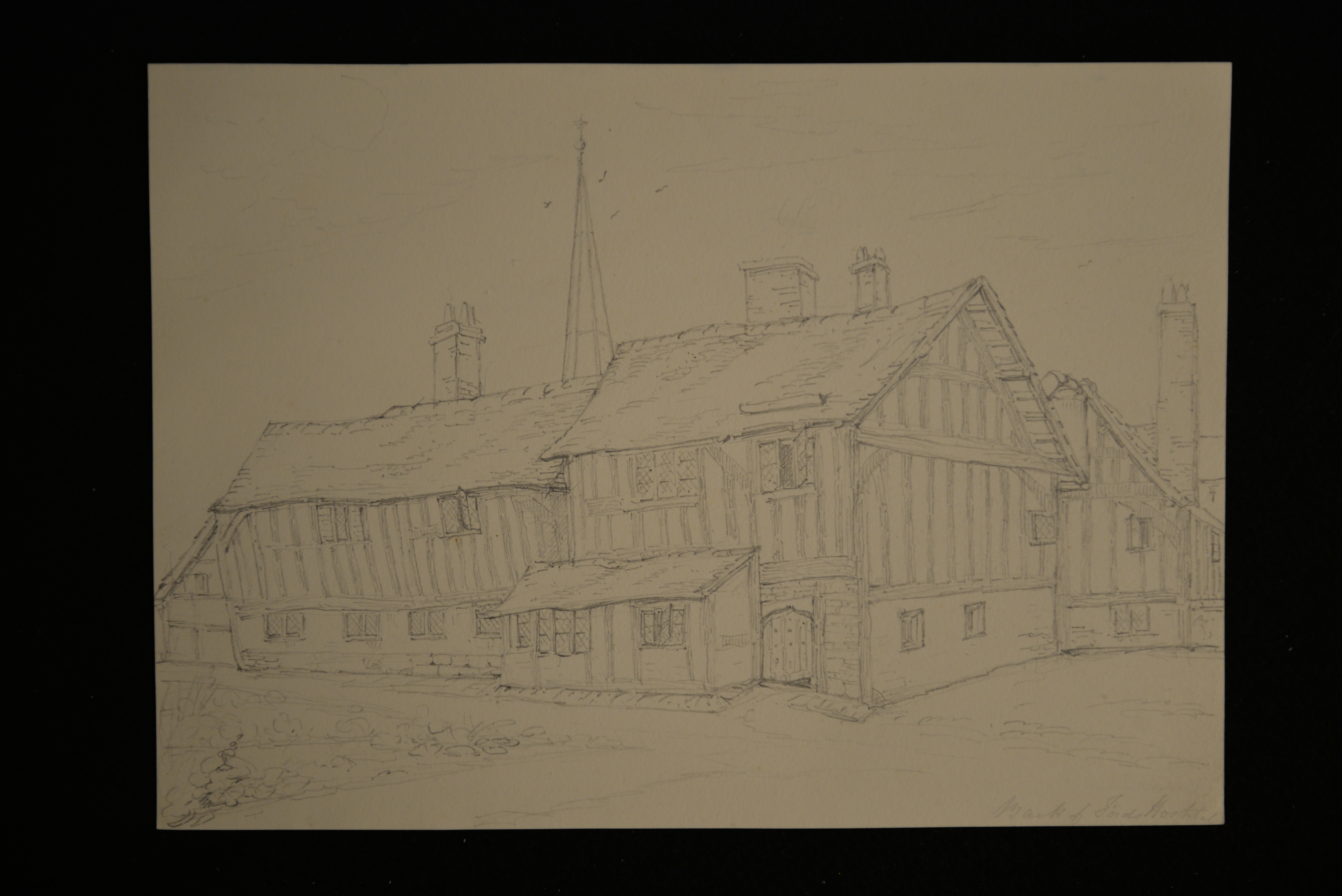
Back of Ford’s Hospital
Victoria County History recalls/recounts that a range of three houses at the west end of Priory Row was likely built soon after the destruction of the priory church in 1539. The plan of the superstructure does not correspond with that of the stone cellars below and it is possible that the latter formed part of a medieval building adjoining the west front of the church. The range is three storied and of four bays, the upper floors having deep jetties with exposed joist-ends and curved brackets.3 The present-day Golden Cross pub, situated at the junction of Pepper Lane and Hay Lane is an example of a jettied timber-framed house. Dating back to 1583, the structural basis of the building is typical of the Tudor style of this period with three vaulted upper floors. Its finest feature is the ‘dragon beam’, a large timber beam that enables a jettied first floor to pass round a corner of the building, visible in the ground floor ceiling.
Some of Coventry’s finest buildings stood along the south sides of High Street, Earl Street, and Jordan Well, supported by both documentary evidence and Troughton’s sketches, which show many timber-framed exteriors in Earl Street, some featuring arched entrances with carved spandrels. Among them is Palace Yard which is partly of medieval origin. Before it was demolished in 1863, the adjoining house featured an arch braced collar-beam roof and had 15th century traceried windows. In addition, illustrations of Old Star Yard depict roof trusses which indicate the presence of open halls of at least two bays.
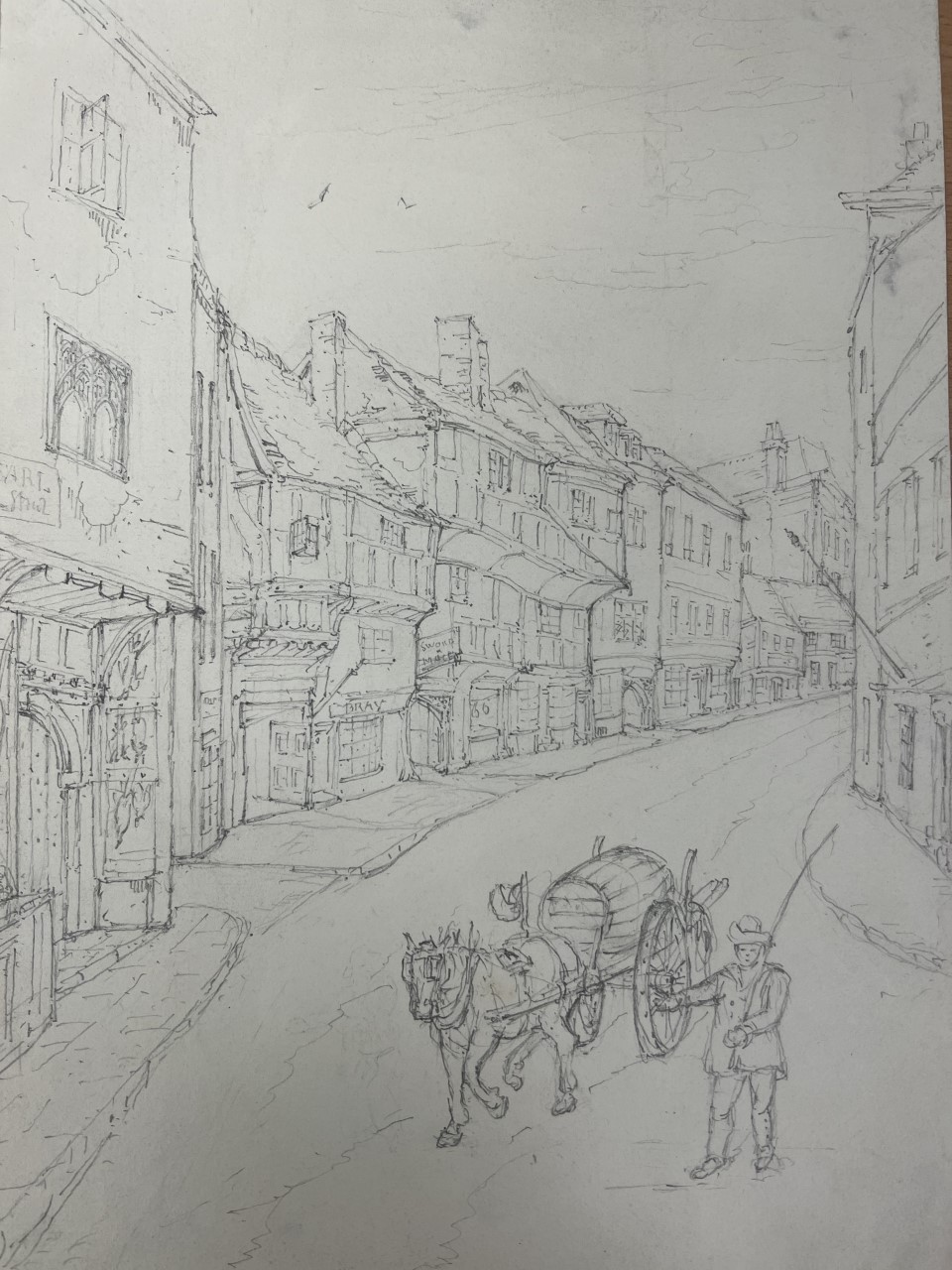
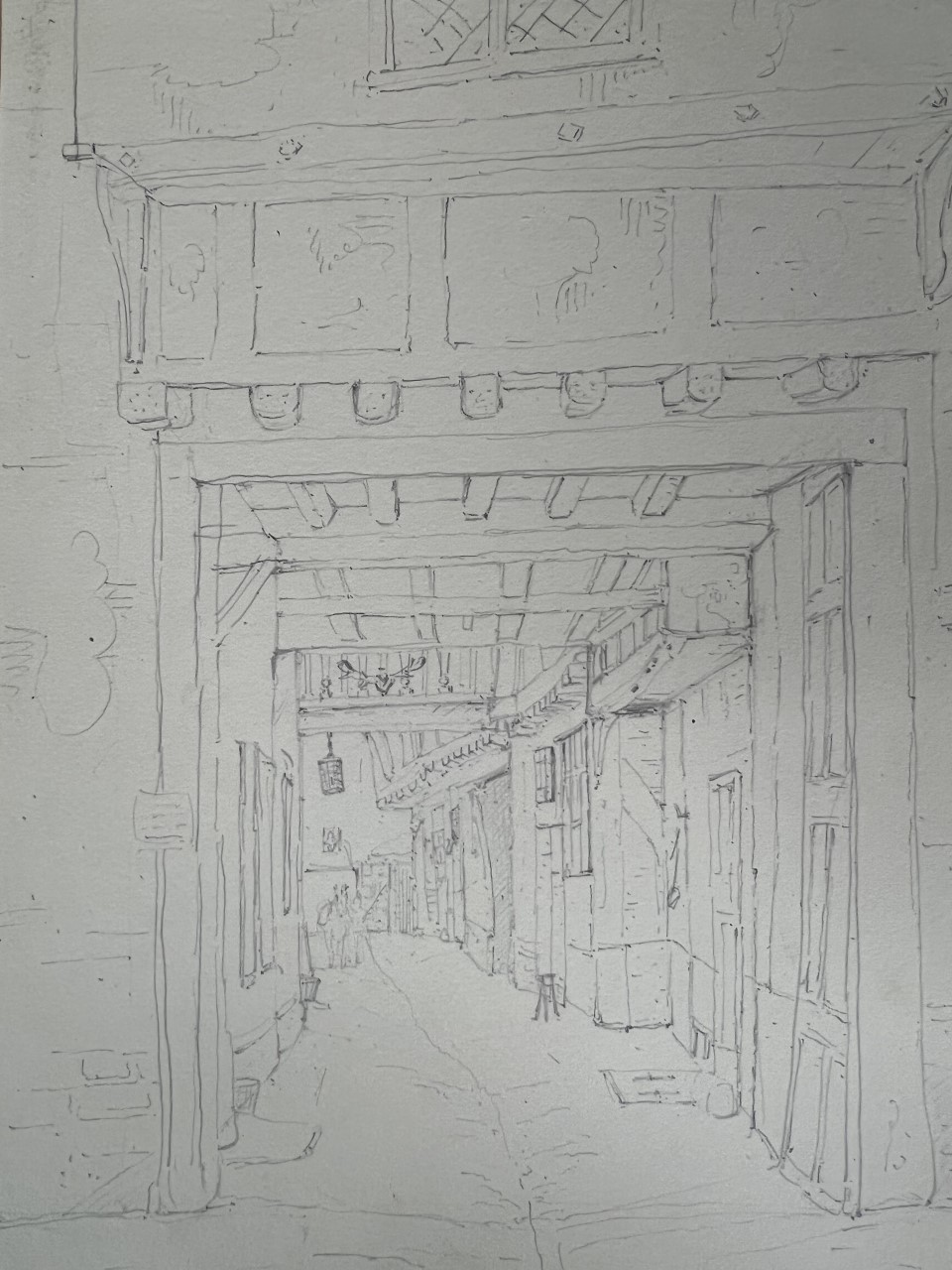
Earl Street South Side Earl Street
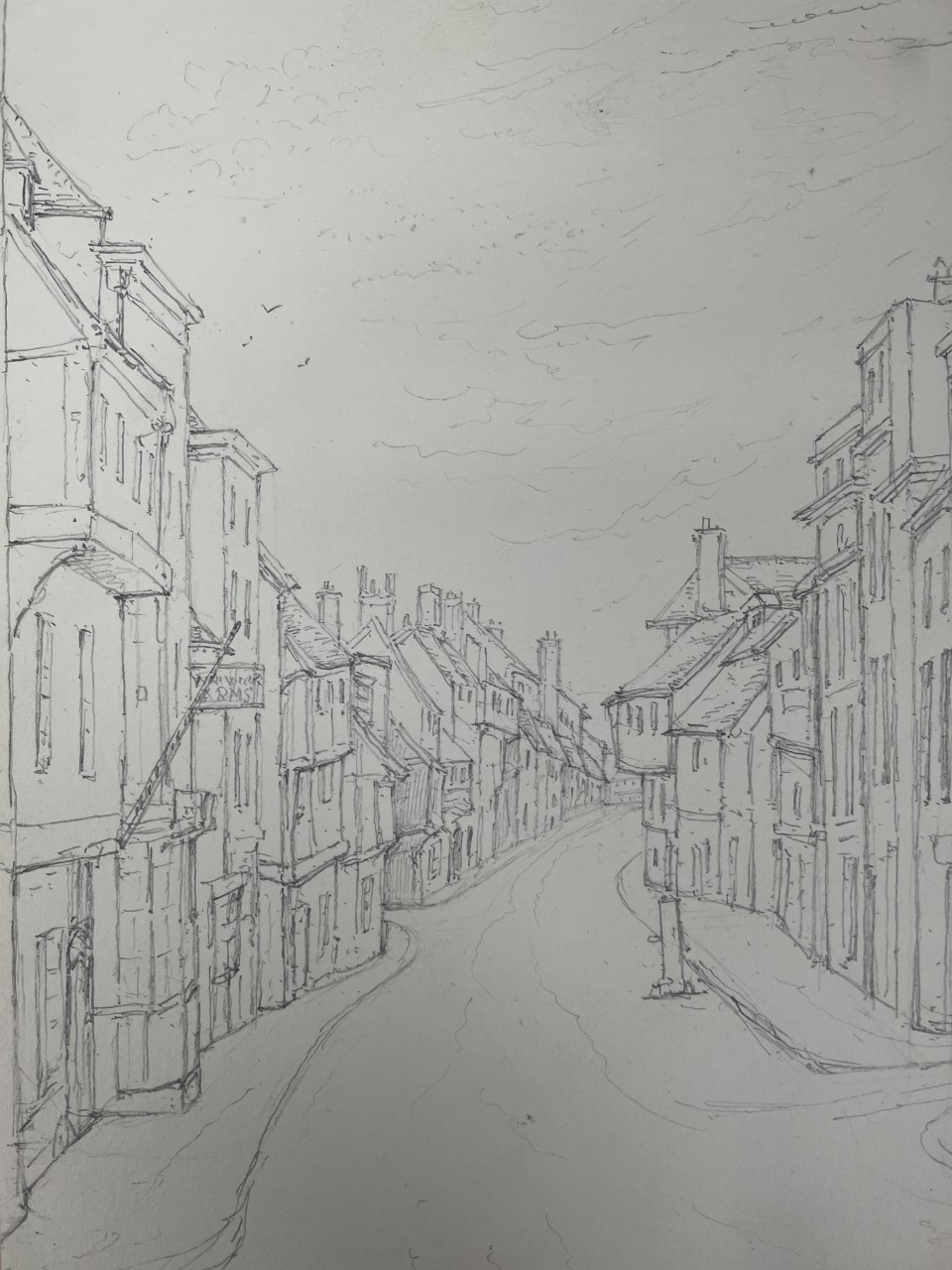
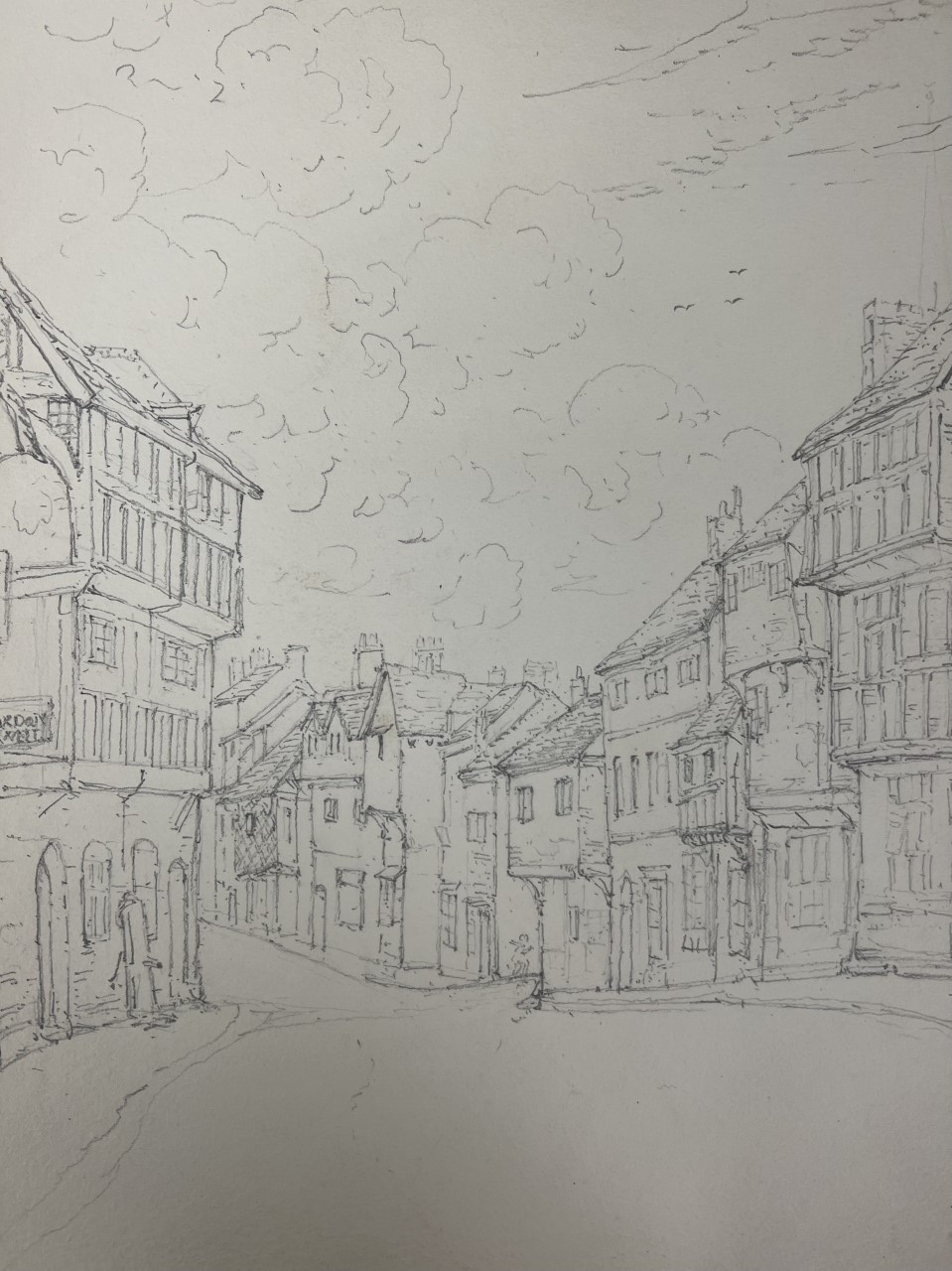
Jordan Well and Gosford Street looking East Jordan Well and Gosford Street looking NW
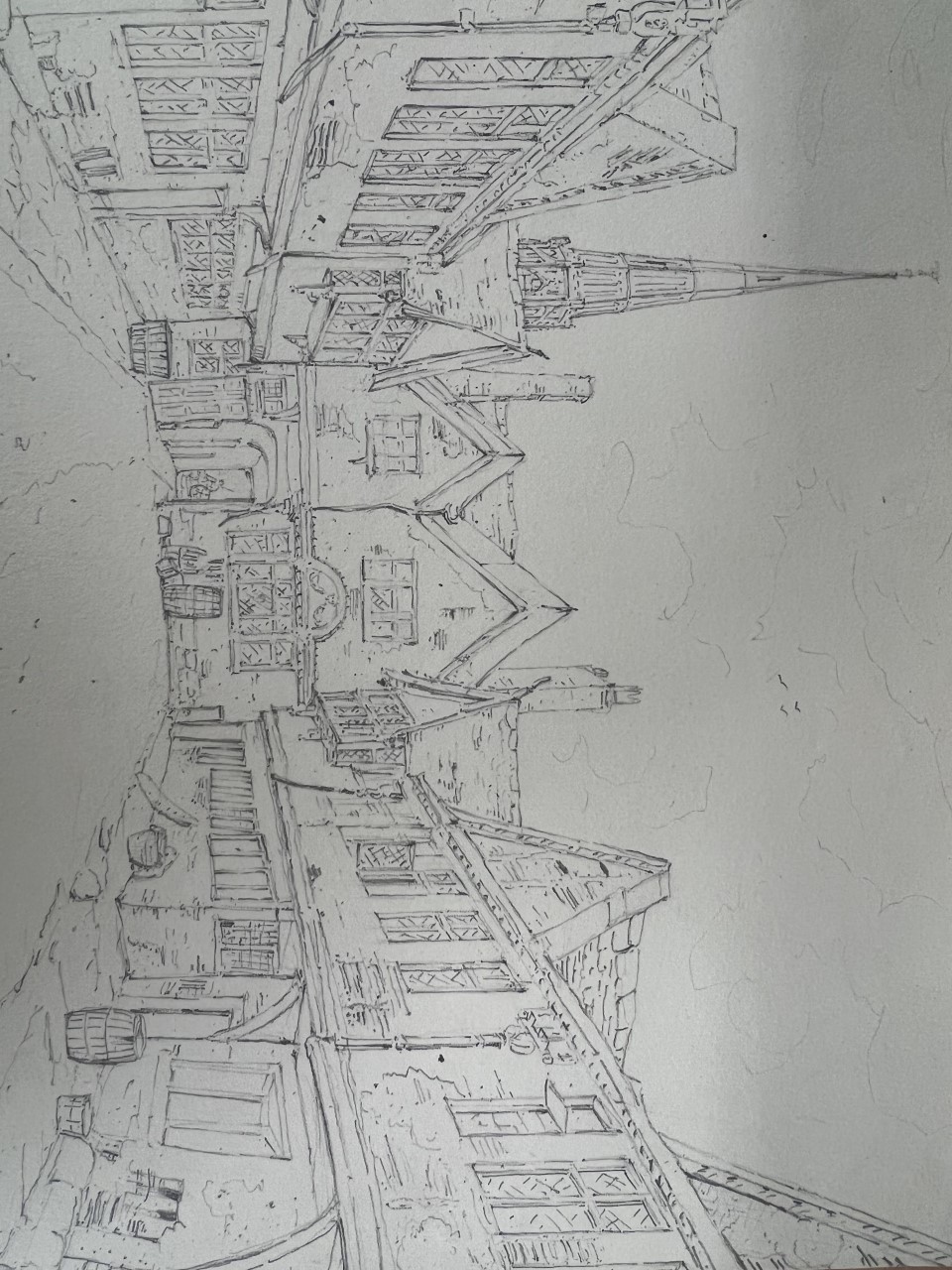
Palace Yard
Dr Troughton also had a keen eye for detail, as demonstrated by a large number of drawings of intricacies of various interiors found in the buildings of Coventry. Below is a selection of some of our favourite examples:
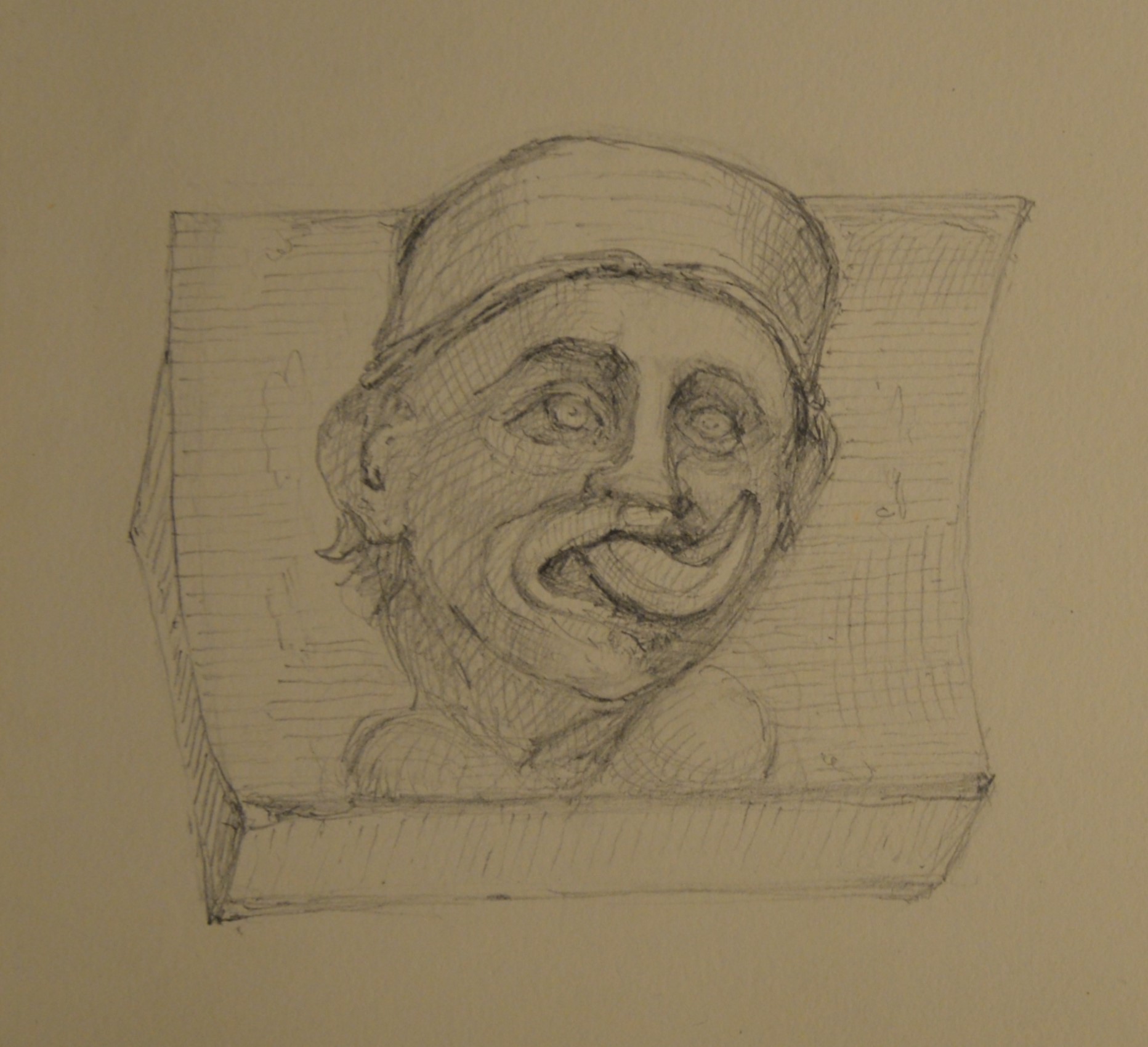
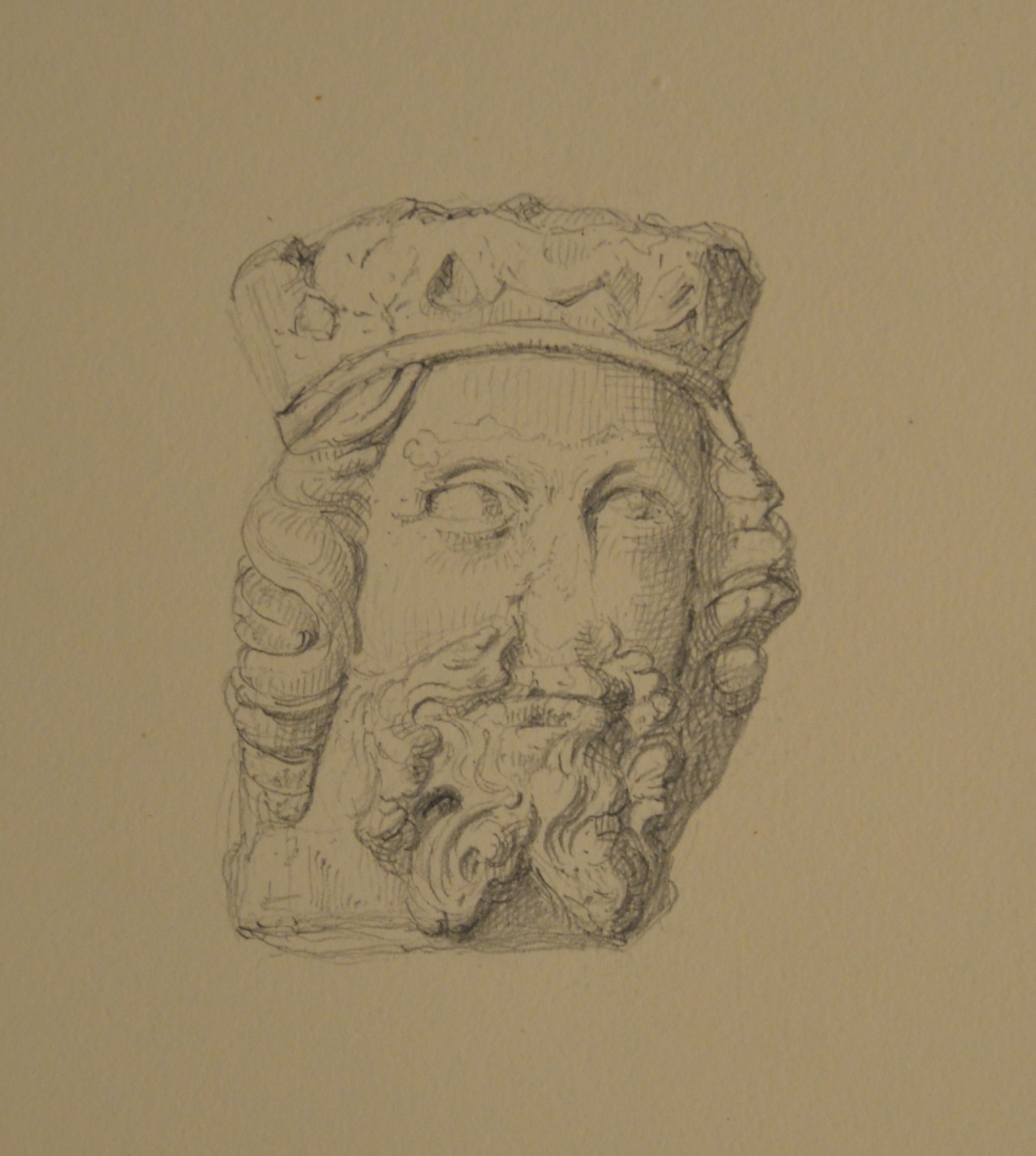
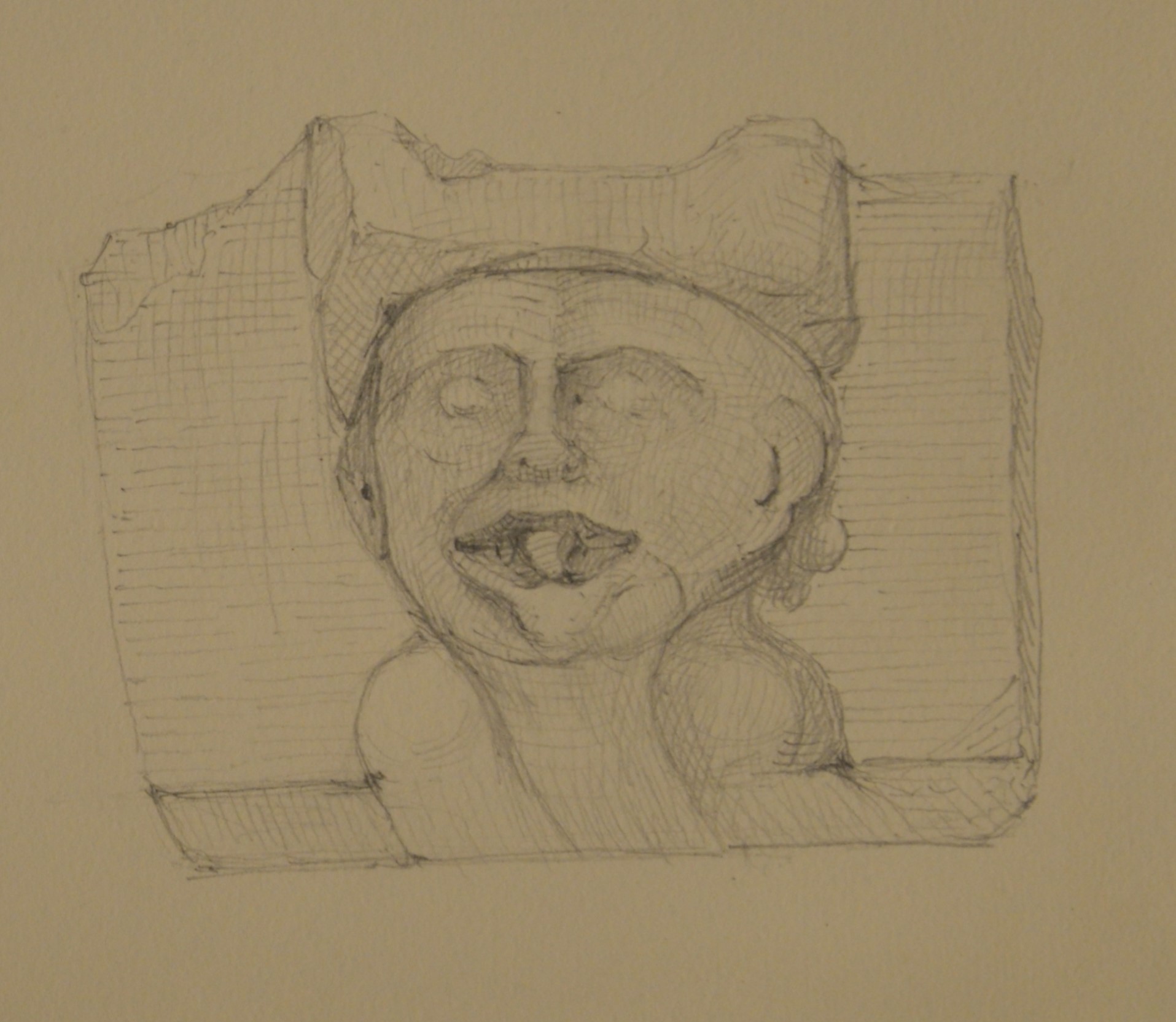
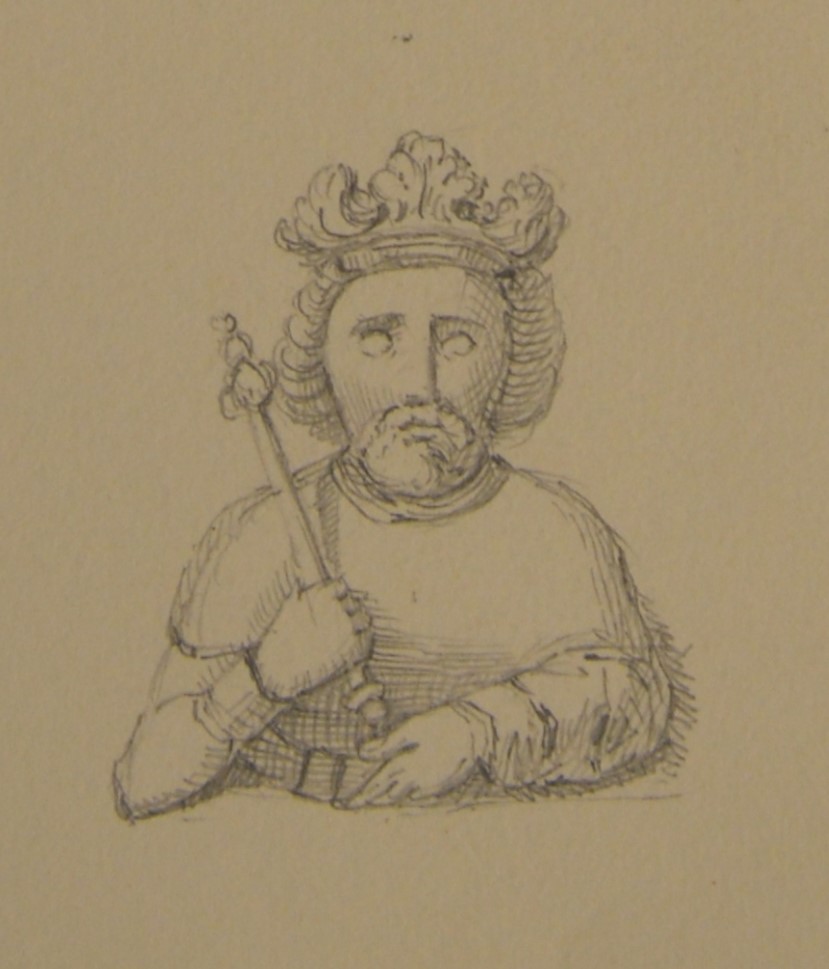
A mixture of illustrations of the ecclesiastical fixtures of St Mary’s Cathedral and interiors of buildings connected with the Gilds of Coventry
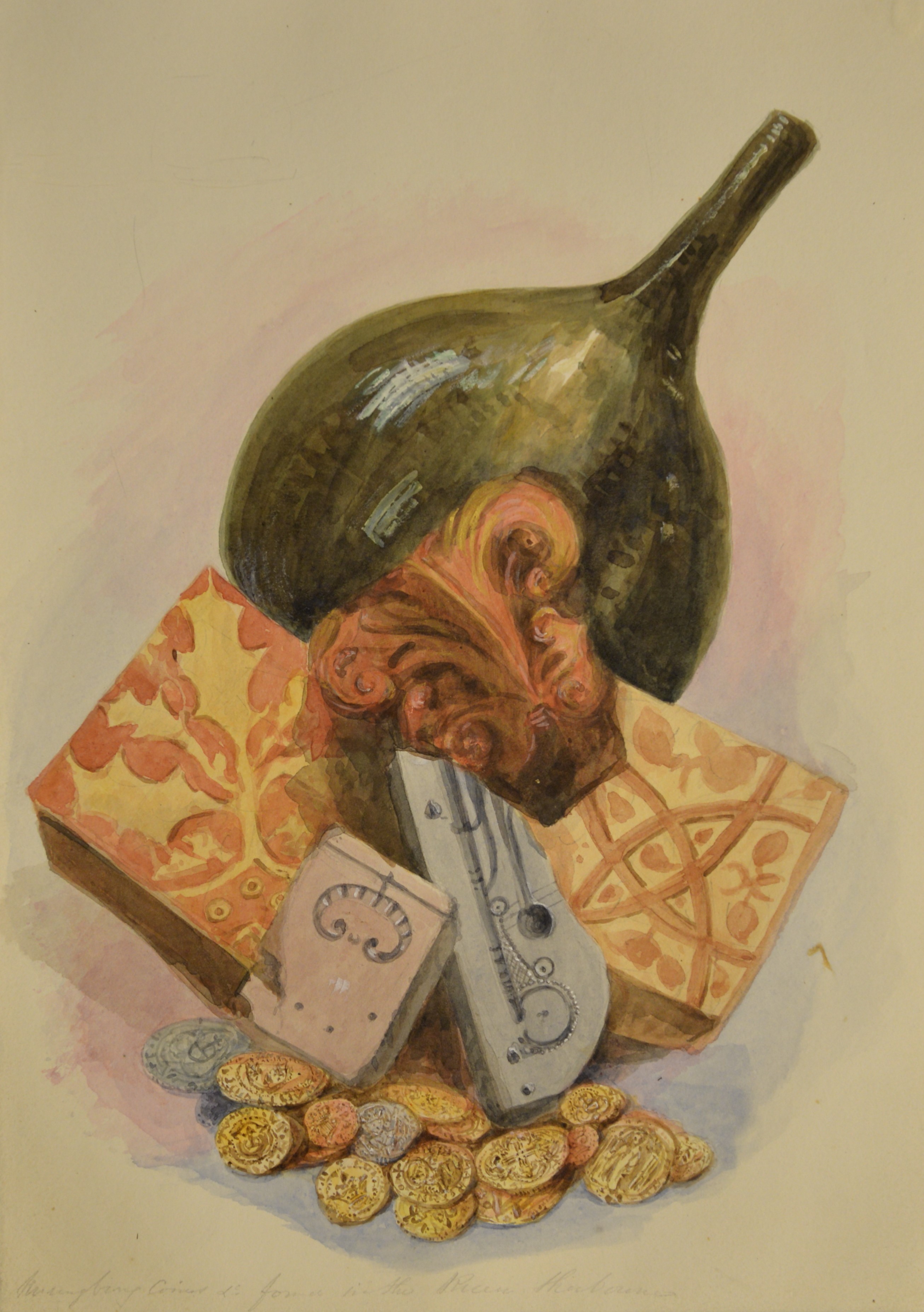
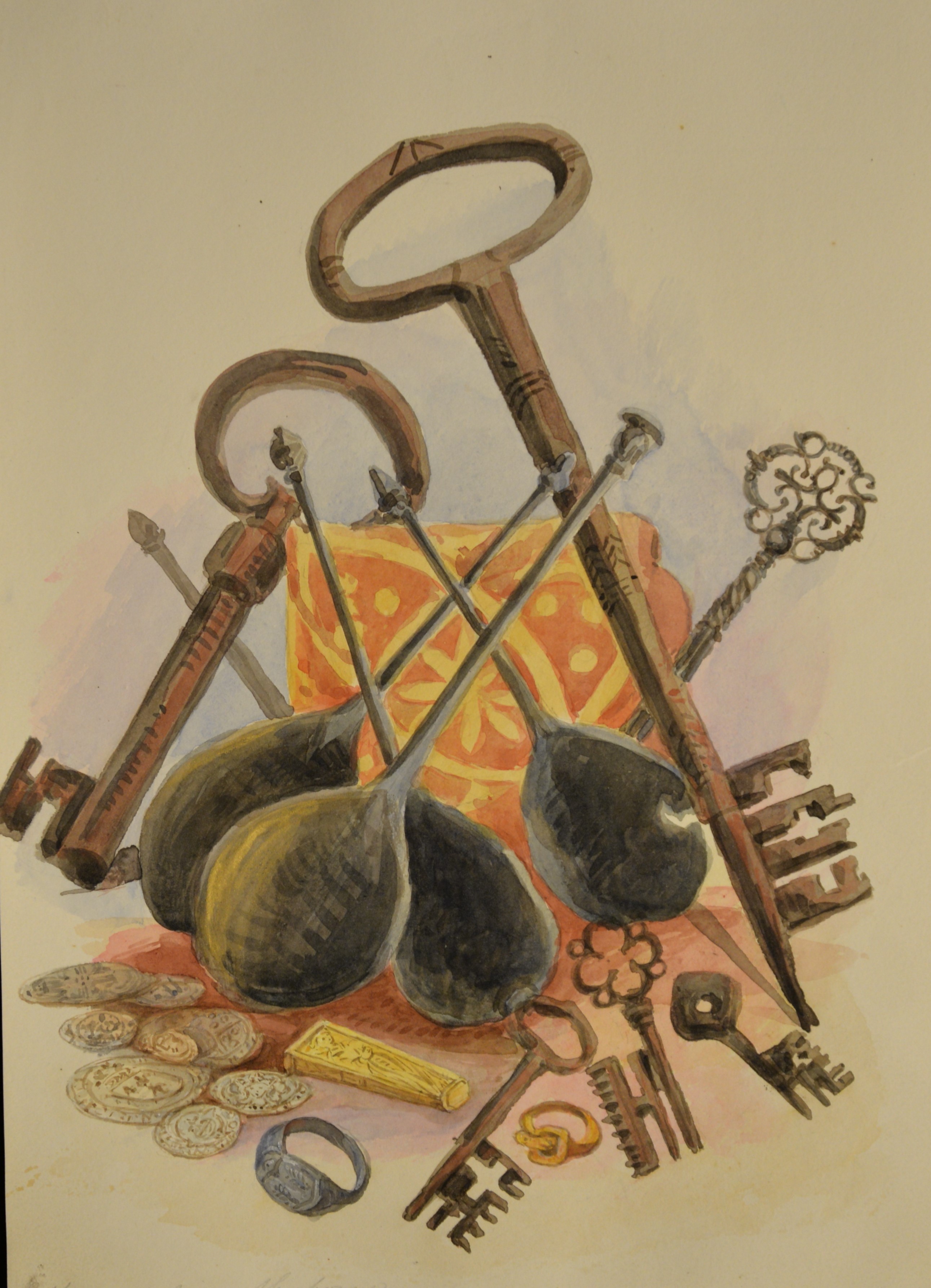
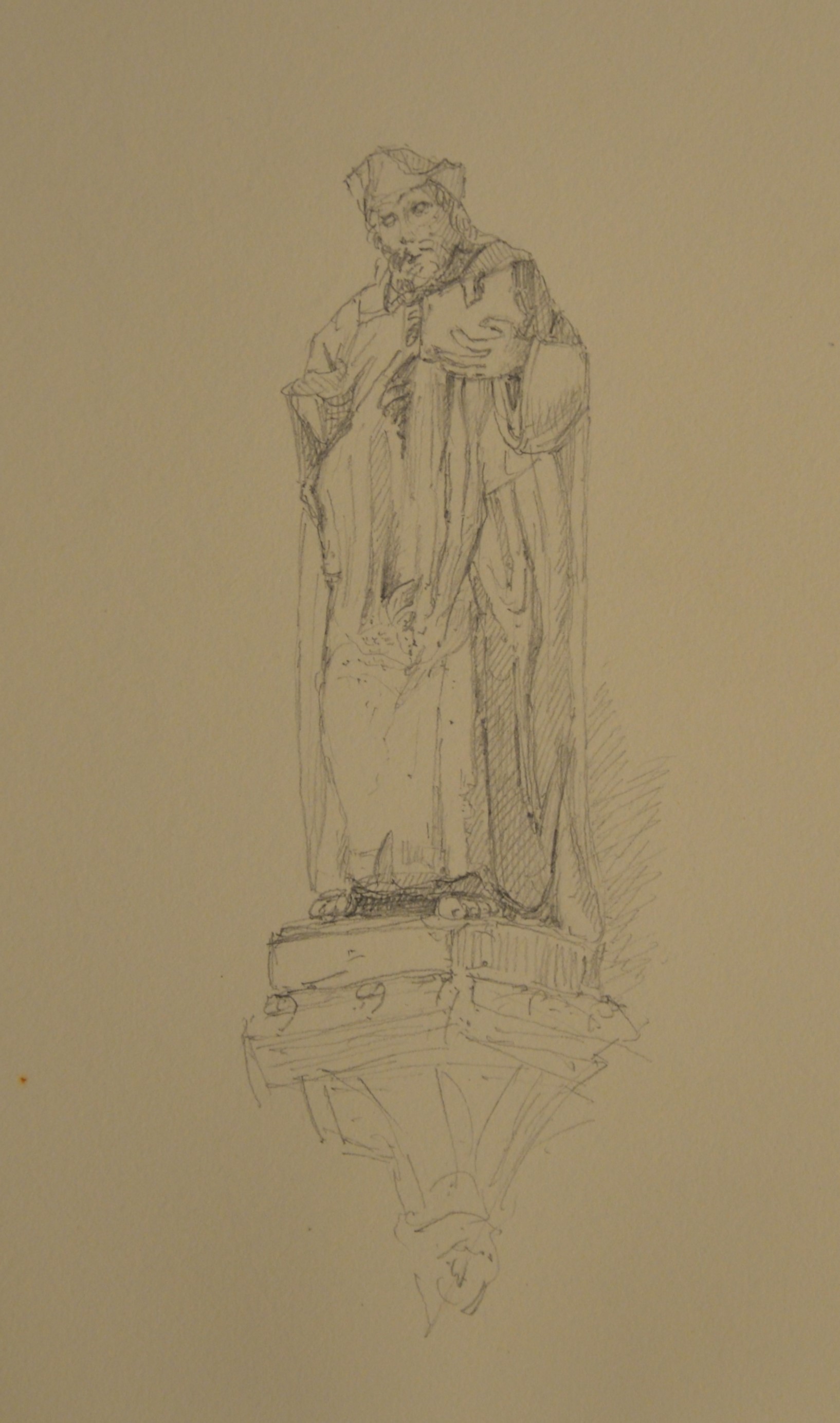
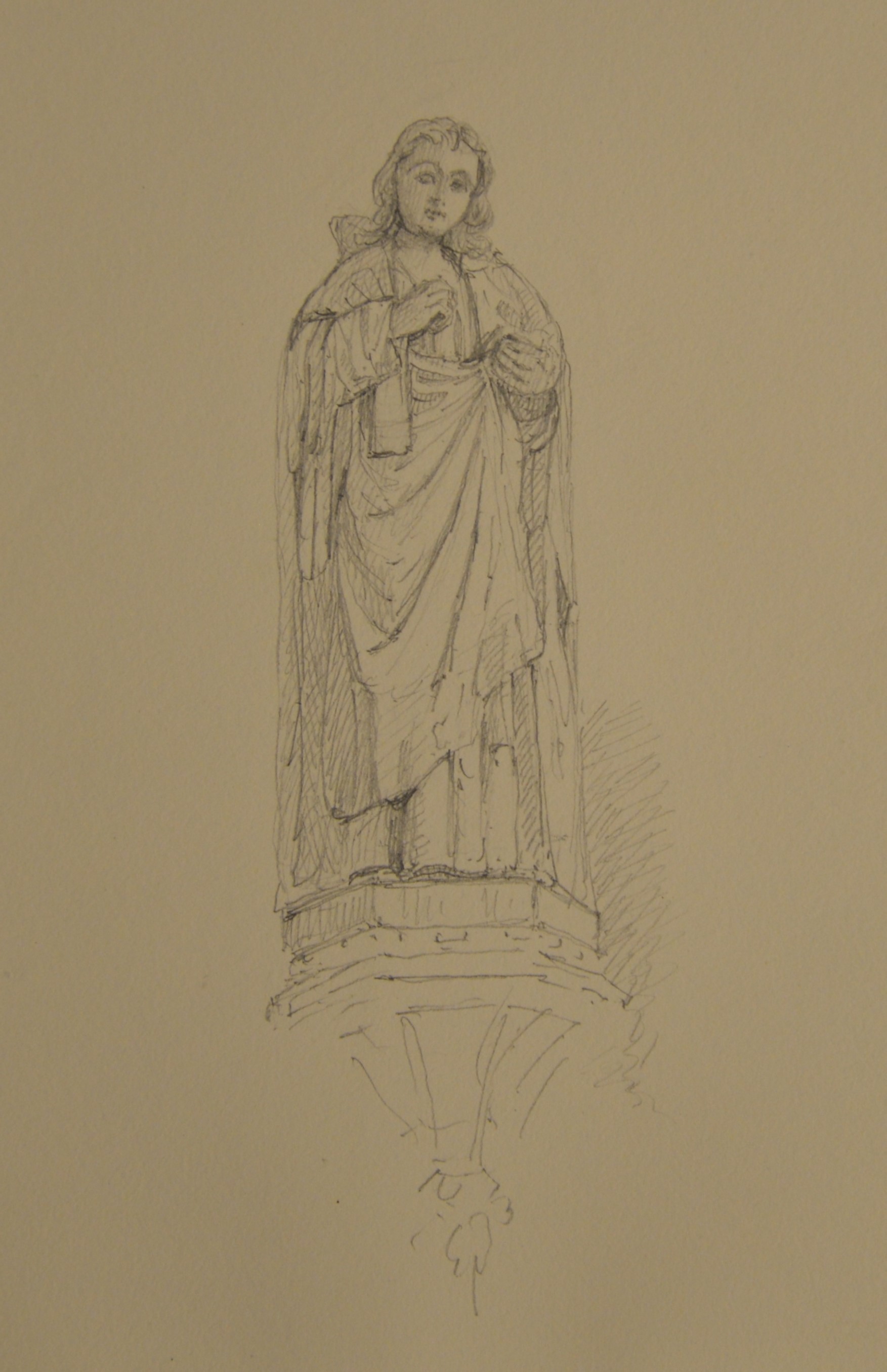
Sketches of antique remains
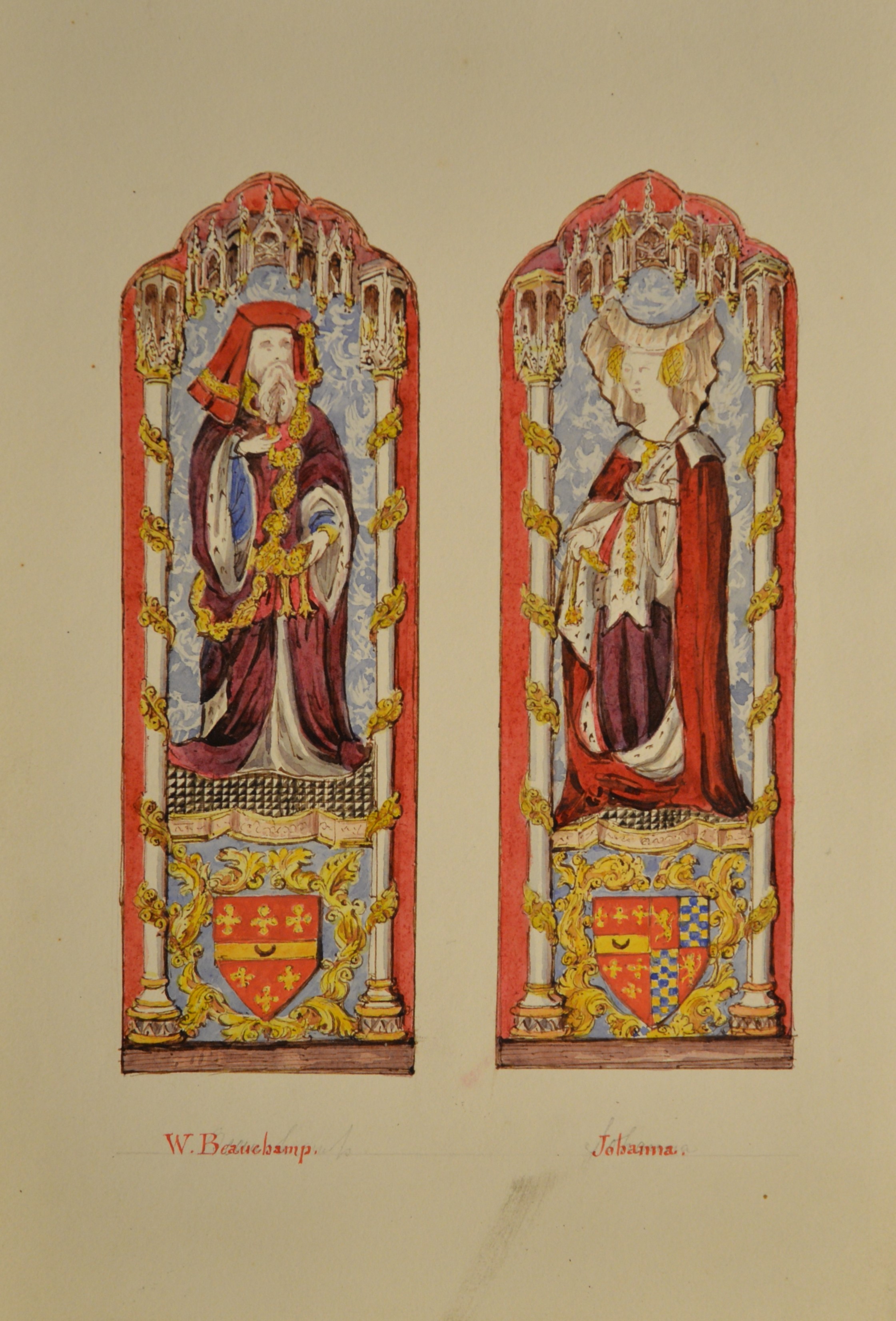
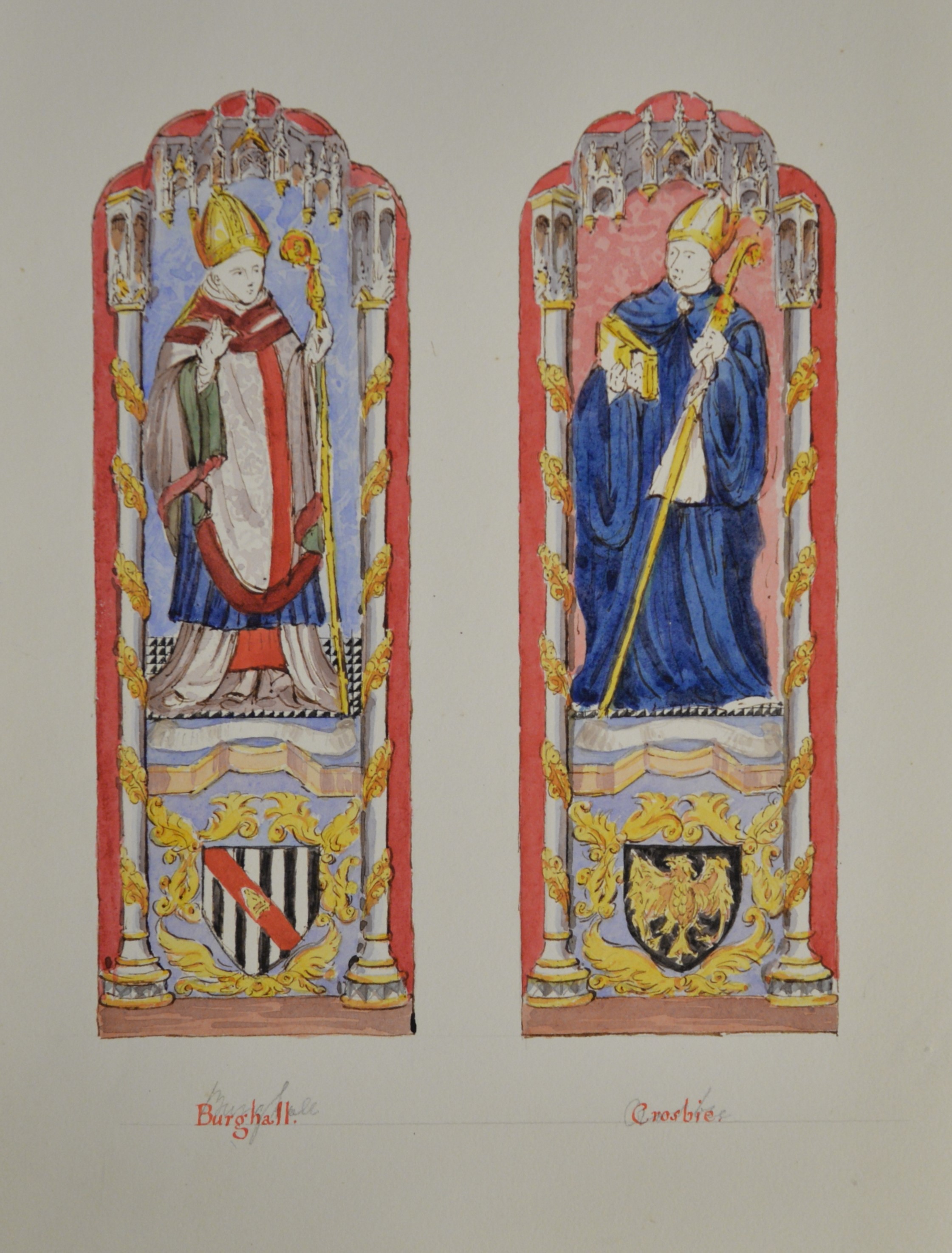
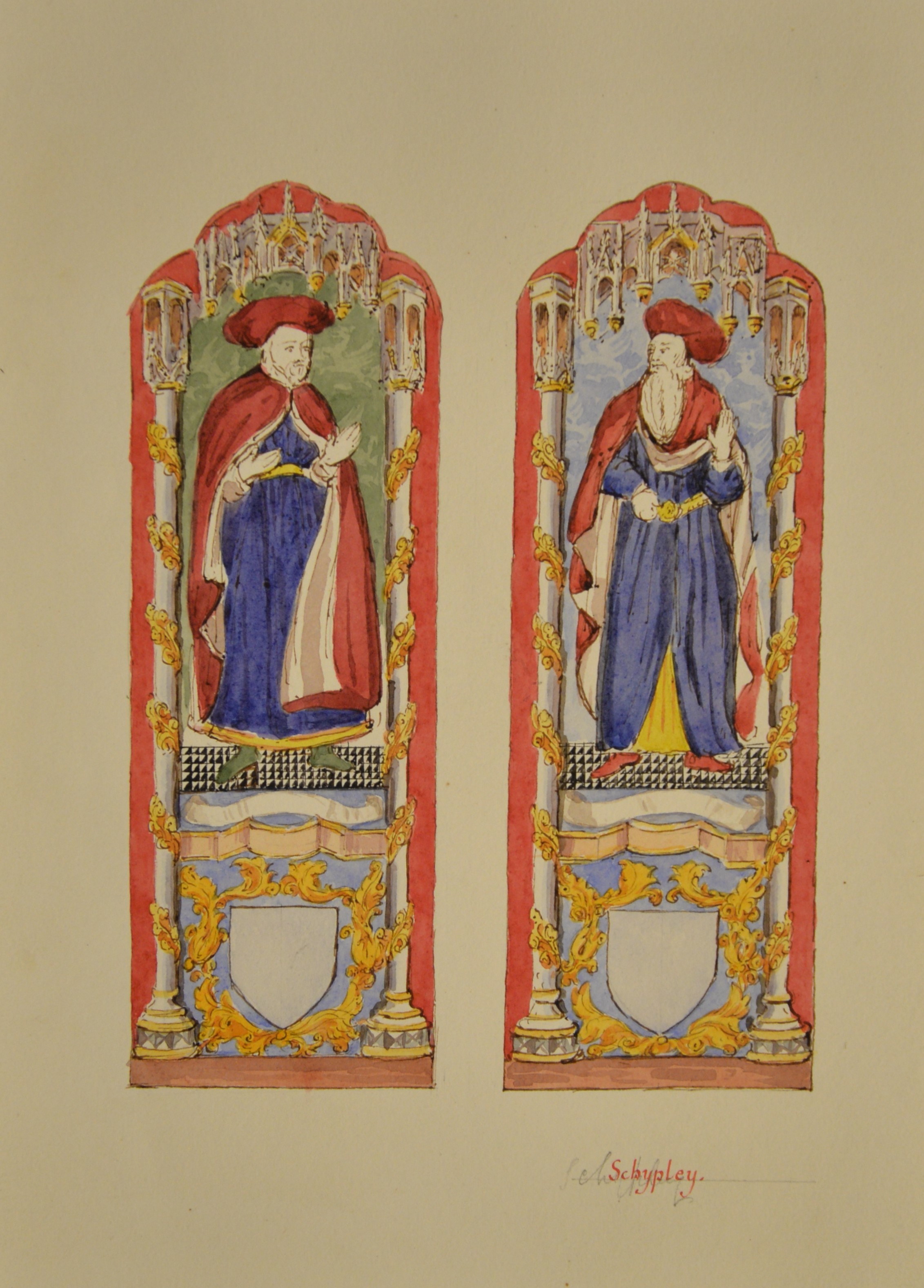
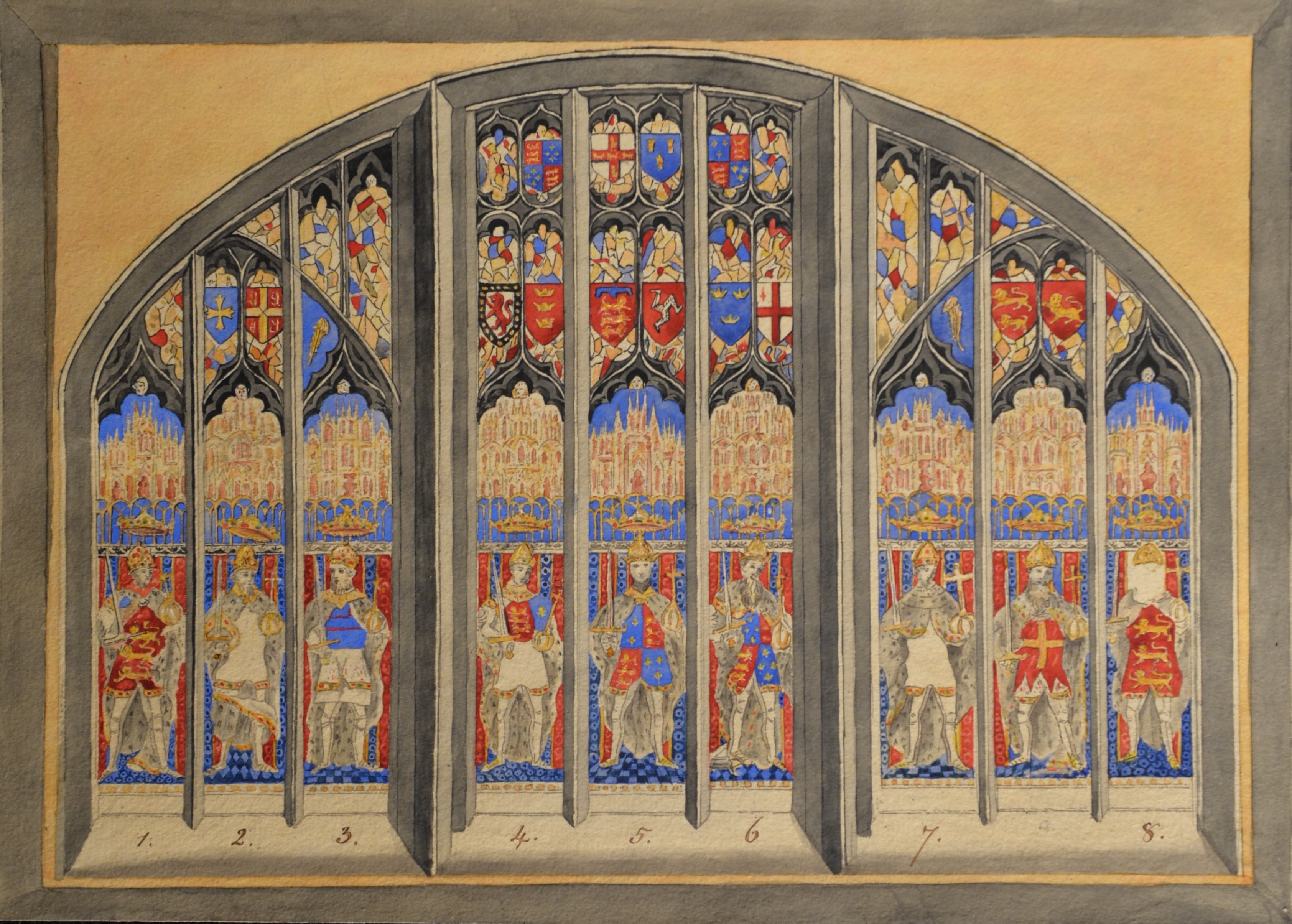
Sketches of St Mary’s Hall
You can find details and references of Dr Troughton’s drawings on our online catalogue (Home - Coventry Collections). As he was a prolific Coventrian, further records relating to him and his activities can be found in our collections.
Written by Vida Milovanovic, Archives Assistant